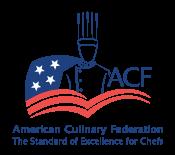COVID-19 SPECIAL ISSUE



A truly diverse tabletop is a feast for the eyes, inviting us to sit back, relax and share good food and great company.
With mixed materials and an unrivaled product assortment, Libbey® Foodservice is your trusted partner for a complete tabletop experience.
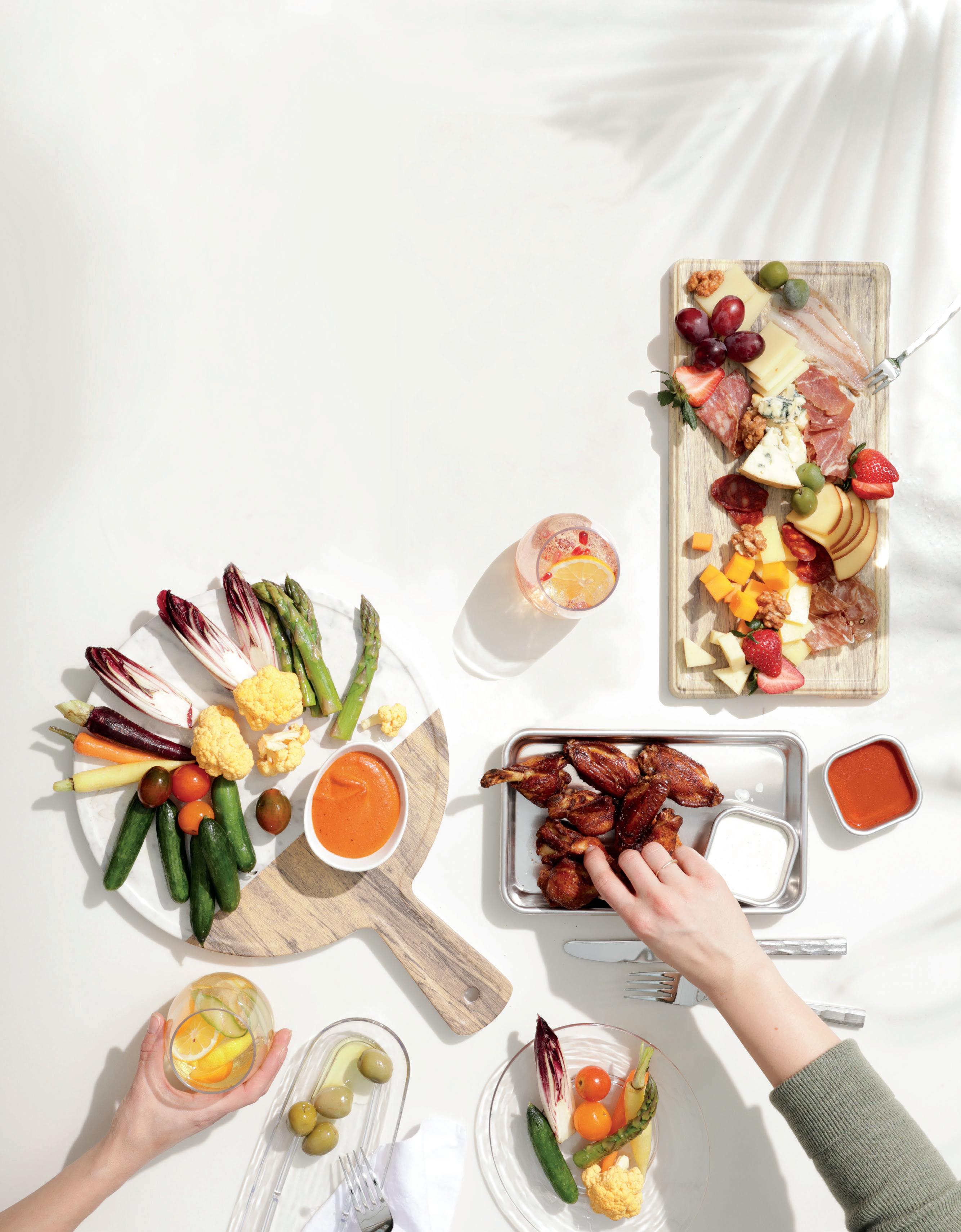
libbeyfoodservice.com

A look at the recently-revived Cape and Island Chefs Association and its members, who have been working with a local organization to feed elementary school children and families in need.
Jamie Bostian, CEC, executive chef at The Pines, a retirement community in North Carolina, delivers farm-to-table meals and groceries to the quarantined seniors on campus.
Gerald Ford, CMC, presents two versions of the comforting dish, fried green tomatoes, in classic form and all dressed up for a modern rendition.
Supporting the mental health of employees and preventing suicide is more important now than ever. Plus, a sidebar with resources for coping with anxiety during this challenging time. 38
Chef-to-Chef
ACF Chef John Reed, CEC, CCA, AAC, discusses the ins and outs of recipe management programs for making your business cash-forward. 40 Main Course
Jackfruit rises to stardom here as plant-based cooks look for suitable meat alternatives.

Editor in Chief Amelia Levin
Creative Services Manager
David Ristau
Graphic Designer
Armando Mitra
Advertising and Event Sales
Eric Gershowitz
Jeff Rhodes
Director of Marketing and Communications

Alan Sterling
American Culinary Federation, Inc.
180 Center Place Way • St. Augustine, FL 32095 (800) 624-9458 (904) 824-4468 Fax: (904) 940-0741 ncr@acfchefs.net ACFSales@mci-group.com www.acfchefs.org
Board of Directors
President
Stafford DeCambra, CEC®, CCE®, CCA®, AAC®
Immediate Past President
Thomas Macrina, CEC, CCA, AAC
National Secretary
Mark Wright, CEC, AAC
National Treasurer
James Taylor, CEC, AAC, MBA
American Academy of Chefs Chair
Americo “Rico” DiFronzo, CEC, CCA, AAC
Vice President Central Region
Steven Jilleba, CMC®, CCE, AAC
Vice President Northeast Region
Barry R. Young, CEC, CCE, AAC
Vice President Southeast Region
Kimberly Brock Brown, CEPC®, CCA, AAC
Vice President Western Region
Robert W. Phillips, CEC, CCA, AAC
Executive Director
Heidi Cramb
The National Culinary Review® (ISSN 0747-7716), May/June 2020, Volume 44,
3,
Inc. (ACF) and is produced 6 times a year by ACF, located at 180 Center Place Way, St. Augustine, FL 32095. A digital subscription to the National Culinary Review® is included with ACF membership dues; print subscriptions are available to ACF members for $25 per year, domestic; nonmember subscriptions are $40. Material from the National Culinary Review®, in whole or in part, may not be reproduced without written permission. All views and opinions expressed in the National Culinary Review® are those of the author and do not necessarily reflect the views and opinions of the officers or members of ACF. Changes of mailing address should be sent to ACF’s national office: 180 Center Place Way, St. Augustine, FL 32095; (800) 624-9458; Fax (904) 940-0741.
The National Culinary Review® is mailed and periodical postage is paid at St. Augustine, Fla., and additional post offices.
POSTMASTER: Send address changes to the National Culinary Review®, 180 Center Place Way, St. Augustine, FL 32095.

As this message reaches you, we will have been in quarantine for over four weeks in most parts of the world. I have been sending personal messages of inspiration to my ohana—my ACF family. I hope that they have helped.
What definitely gives me hope, though, is you. Chefs naturally respond well during times of crises, pitching in to work together to be a force of good. As the coronavirus pandemic took hold of the world and of our nation, causing the closures of schools, businesses, restaurants and other foodservice operations, it came as no surprise to me that many chefs—and so many ACF chefs, in particular—jumped to the front lines to feed healthcare workers, displaced hospitality workers, first responders, children out of school, senior citizens at high risk and many others in need.
The stories have been flooding in. That’s why this special COVID-19 issue of NCR is all about you: our members and the dedicated, impassioned chefs who make up the backbone of our industry. We have always been so proud of your hard work, but especially lately. We hope that reading about what some of your peers are doing will help you stay inspired, motivated, connected and informed during this tough time.
Depending on your situation, you might be working less and spending more time at home social distancing. Now is the perfect time to take advantage of educational opportunities to refresh, refocus and return even stronger than before when economies reopen. We launched the ACF United (#ACFUnited) campaign specifically to funnel more resources to our members during the ongoing pandemic. An important part of that campaign is continued learning in the form of free, weekly webinars and a free, online learning bundle that includes select courses and recordings from past conferences. We also hope that some of the previouslyscheduled, feel-good content in this issue of NCR—as well as ongoing coverage on WeAreChefs.com—will keep your minds active and creative juices flowing. Even if some commercial kitchens are closed, we need not ever stop cooking.
In April, we launched the Ferdinand Metz/ACF Relief Fund to assist foodservice workers who are facing financial hardship due to the pandemic. Applications for assistance can be found on WeAreChefs.com. If you are in a position where you can assist those less fortunate, please donate what you can to the fund.
During this time, might I encourage you to seek solace in the things that bring you comfort and hope, whether that’s continued cooking and/or spending more time with your family, reading books, dancing, listening to music, indulging in hobbies and more. Find your center, look to the future, connect with us and others, and we will get through this—united and together as one. Mahalo!
Stafford T. DeCambra, CEC, CCE, CCA, AAC National President American Culinary FederationContact

Cuando llegue este mensaje, habremos estado en cuarentena durante más de cuatro semanas en la mayor parte del mundo. He estado enviando mensajes personales de inspiración a mi ohana, mi familia de ACF. Espero que los hayan ayudado.
Sin embargo, lo que definitivamente me da esperanza es ustedes. Los chefs responden naturalmente bien en tiempos de crisis, colaborando para trabajar juntos y ser una fuerza del bien. A medida que la pandemia de coronavirus se apoderó del mundo y de nuestra nación, causando el cierre de escuelas, negocios, restaurantes y otras actividades de servicios de alimentos, no me sorprendió que muchos chefs, y tantos chefs de ACF en particular, se pusiesen a disposición para alimentar a los trabajadores de la salud, los trabajadores de hospitalidad desplazados, los socorristas, los niños que no van a la escuela, las personas mayores en alto riesgo y muchos otros necesitados.
Me han llegado cientos de historias. Es por eso que esta edición especial de NCR sobre COVID-19 se trata de ustedes: nuestros miembros y los chefs dedicados y apasionados que constituyen la red troncal de nuestra industria. Siempre hemos estado muy orgullosos de su arduo trabajo, pero especialmente en los últimos tiempos. Esperamos que las historias sobre lo que algunos de sus compañeros han estado haciendo los ayuden a mantenerse inspirados, motivados, conectados e informados durante este difícil momento.
Dependiendo de cada situación particular, quien lea esto puede estar trabajando menos y pasando más tiempo en casa, practicando el distanciamiento social. Ahora es el momento perfecto para aprovechar las oportunidades educativas para refrescarse, volver a enfocarse y regresar aún más fuertes que antes cuando las economías vuelvan a abrir. Hemos lanzamos la campaña ACF United (#ACFUnited) específicamente para canalizar más recursos a nuestros miembros durante la pandemia. Una parte importante de esa campaña es el aprendizaje continuo en forma de seminarios web semanales gratuitos y un paquete de aprendizaje en línea gratuito que incluye cursos y grabaciones de conferencias anteriores. También esperamos que parte del contenido positivo ya programado para esta edición de NCR, así como la cobertura continua en WeAreChefs.com, mantenga sus mentes y sus ideas creativas activas y en movimiento. Incluso si algunas cocinas comerciales están cerradas, no debemos dejar de cocinar.
En el mes de abril lanzamos el Fondo de ayuda Ferdinand Metz/ACF para ayudar a los trabajadores de servicios de alimentos que están atravesando dificultades financieras debido a la pandemia. Las solicitudes de asistencia se pueden encontrar en WeAreChefs.com. Si están en condiciones de ayudar a los menos afortunados, les pedimos que donen lo que puedan al fondo.
Durante este tiempo, me permito invitarlos a que se apoyen en aquellas cosas que les brinden consuelo y esperanza, ya sea que continúen cocinando y/o pasando más tiempo con su familia, leyendo libros, bailando, escuchando música, disfrutando de pasatiempos u otras actividades. Encuentren su centro, miren hacia el futuro, conéctense con nosotros y con otras personas, y lo superaremos, unidos y juntos como un equipo. ¡Mahalo!
¿Tienen noticias o inquietudes que compartir, una historia para contar o alguna pregunta para hacer? No sean tímidos: comuníquense con nuestro equipo en pr@acfchefs.com , contáctenme directamente en sdecambra@acfchefs.net o síganme en Facebook @stafforddecambra e Instagram @sdecambra .
¡Queremos saber de ustedes!
Do you have news or concerns to share, a story to tell or questions to ask? Don’t be shy: reach out to our team at pr@acfchefs.com , contact me directly at sdecambra@acfchefs.net or follow me on Facebook @ stafforddecambra and Instagram @sdecambra .
We want to hear from you!

In the wake of the coronavirus pandemic, the ACF United campaign was created to help chapters and members connect as well as discover resources for guidance and support during this challenging time. As part of the campaign, ACF has launched a series of free webinars covering timely topics, such as the impact of COVID-19 on our businesses, advice for coping with change, how chef-instructors are continuing to teach their students, and even cooking with cannabis. If you missed any of these webinars, the recordings are all available on WeAreChefs. com. During this time, ACF remains committed to continued learning; members and non-members may also enjoy a free, online learning bundle, which includes a selection of courses and past conference recordings.
The Ferdinand Metz/ACF Relief Fund was established to provide financial assistance to chefs, cooks, culinarians and foodservice workers across America who have experienced hardship during the COVID-19 crisis. Eligible applicants are those who were employed by a foodservice establishment in any segment (restaurant, country club, hospital, etc.), but were laid off or furloughed or had their hours reduced. Grants, in the amount of $500 are being distributed on a first-come, first-served basis. Affiliation with ACF or ACFEF is not required as a condition of eligibility. To learn more or to donate, visit acfchefs.org.
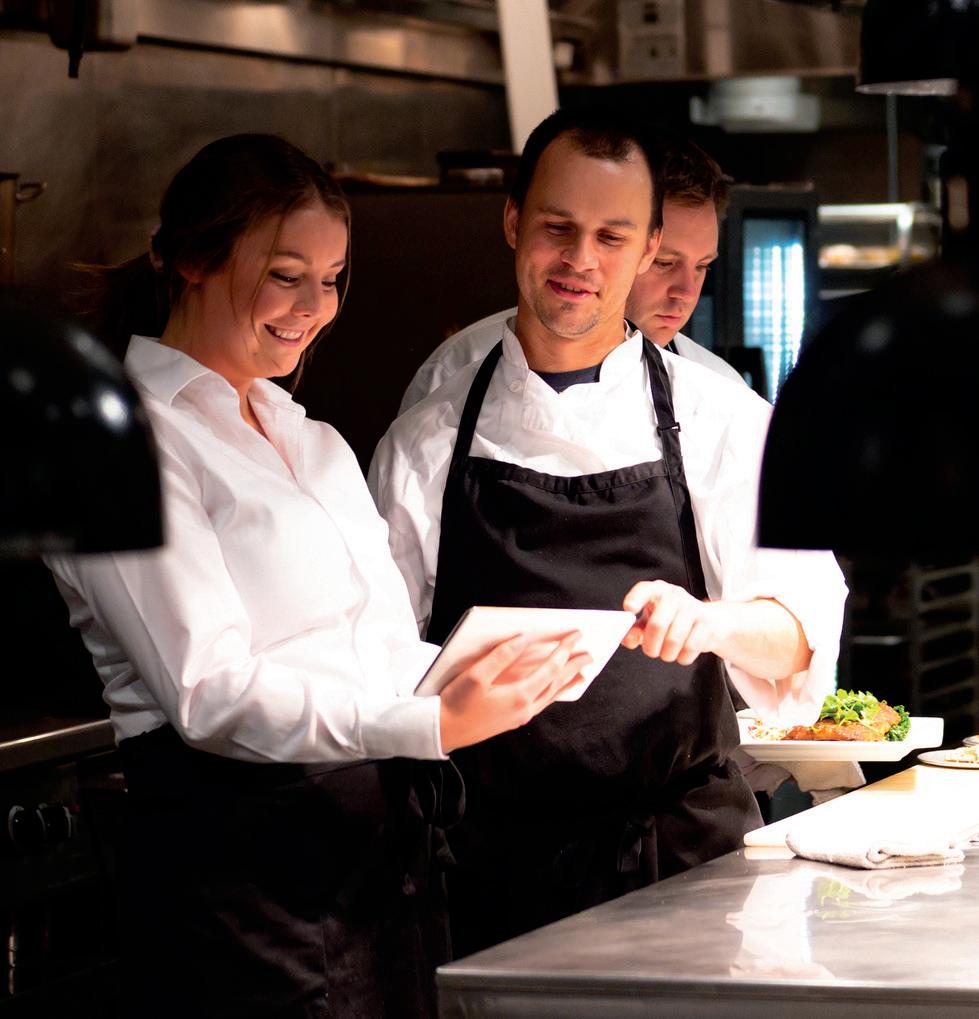
Third-party research firm Datassential surveyed operators and consumers in March and April about the coronavirus pandemic. Here is a snapshot of some of the firm's data below, with a more complete list on WeAreChefs.com:
• Consumers are interested in pop-up groceries hosted by restaurants, with over 70 percent of Gen Z, Millennials and Gen X most interested in items such as bread, produce and fresh meat and seafood; DIY and take-and-bake kits are a hit, with consumers favoring comfort food kits, build-your-own pizza and build-your-own tacos or burritos.
• Millennials (80 percent) and households with kids (81 percent) show the most interest in full 3- or 4 course family meal deals; 25 percent have closed completely for the time being rather than offer takeout or delivery; 34 percent have not made any menu changes in response to the Coronavirus; 20 percent of restaurants have added new online ordering or pre-pay abilities that they did not offer previously, and 44 percent of operators say it would help if they had unlimited access to cleaning supplies and food safety necessities.
• Out of 45 K-12 operators polled in late March, 69 percent have made zero cuts to the; 67 percent are open for takeout or delivery (74 percent curbside), while 31 percent have closed completely for now, and 42 percent of K-12 operators say they feel confident knowing what steps to take during this crisis since they are accustomed to detailed safety regulations.

• Datassential polled 51 college and university operators in late March and found that 47 percent are open for takeout or delivery, while 51 percent have closed completely for now; 25 percent have made zero cuts to the staff, while another 53 percent let go of 75 percent of staff. Among C&U operators still open, 96 percent have decreased their purchasing, and 80 percent have narrowed menu offerings.
• Datassential polled 47 healthcare foodservice operators in late March and found that 28 percent are still open for business, including for dine-in, while 66 percent have closed dine-in and are offering takeout and delivery; 56 percent of sales are down, with the higher-margin side of visitors and employees taking a hit, and 87 percent have made no staffing cuts.
ChefConnect Nashville has been rescheduled for October 26-28. The National Convention, scheduled for July 19-23 in Dallas, has been canceled, but ACF will be moving the conference content online in a virtual format. For updates about the virtual conference, visit acfchefs.org/events.
From hosting conference calls and Zoom meetings to partnering with local organizations, feeding front-line healthcare workers, redirecting and retaining staff, and boxing up meals and groceries for those in need, our ACF members are going above and beyond during the COVID-19 pandemic to help their communities.
With more than 500,000 displaced hospitality industry workers in the state of Georgia alone, a group of 27 restaurant groups, local chefs and ACF Atlanta Chefs Association members came together to establish ATL Family Meal, an organization feeding out-of-work individuals and others in need during the COVID-19 crisis. “We earned 501(c)(3) status in just 48 hours,” says ACA Chapter President Nicholas Barrington, CEC, who—along with wife and executive director Polly Barrington— have been hard at work handling the logistics aspect of the organization. That has included coordinating with suppliers to source food. The meals are then prepped in various kitchens in the area, including at the East Lake Golf Club, where Chef Nick Barrington serves as executive chef. In just one week, Chef Barrington was able to source 300 pounds of bacon, 90 cases of ham, 1,400 pounds of chicken, multiple pallets of heirloom carrots from a local farmer and 800 pounds of liquid eggs, which he used for quiche. At press time, Chef Barrington's team were preparing 2,100 meals for the displaced hospitality workers as well as healthcare workers, first responders and families in need. One restaurant distributed 2,800 boxes of groceries in two days for displaced workers. In addition, ATL Family Meal has partnered with local delivery service Zifty to drop off grocery boxes as well as cooked and chilled meals to various destinations throughout the state. To ensure the safety of staff, temperature checks are taken before each shift and workers must stay six feet apart as well as wear masks and frequently change gloves. The state health department has approved the procedures in place at each of the participating restaurants.
In response to the COVID-19 pandemic, the TCA executive committee has launched a TCA Chef Relief with funds earmarked to assist members in need. Applications are evaluated on a case-by-case basis. The funds are not able to be used as a supplement for lost wages.
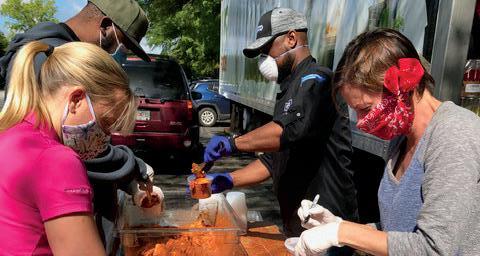
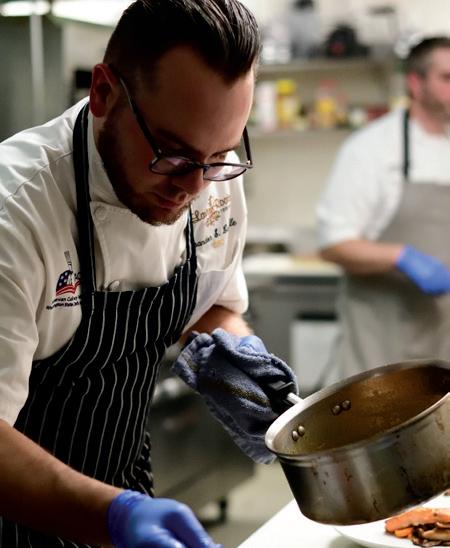
Chapter President Brandon LaVielle, CEC, WCEC, director of culinary and partner of Lavish Roots Catering and Hospitality, has been focusing, first, on how to keep his staff employed after many of his high-profile tech clients closed their offices. Luckily, many of his clients were paid up for at least a couple months when the pandemic hit, and Chef LaVielle has redirected his operating costs and savings to be able to retain 100 percent of his staff’s wages and benefits. “We owe it to our team to do whatever we can to support them,” he says. In the first two weeks of business closures, Chef LaVielle shifted his catering operation to a to-go service for first responders (his father is a local fire chief), but he pulled back on that decision in order to keep his staff and customers safe. During the down time, he has encouraged his staff to focus on education by taking advantage of ACF’s online learning courses, and the group stays in touch by sharing photos and videos of what they’re making for breakfast, lunch and dinner. “We are also redoing our operations manual to include more details about each job in the kitchen so that when we do ramp up again and hire new people, we will have far more elaborate job descriptions and expectations that are well-documented,” Chef LaVielle says. “I think the investment that we are putting in our team during this time is more than worth it.”
Prior to the ban on large events, the chapter held its annual President's Gala, which turned 50 this year. The gala, which featured a Roaring 20’s theme this year and took place on March 7 at the Embassy Suites by Hilton Noblesville Indianapolis Conference Center, was completely sold out, with 165 attendees. The event raised $13,000 for scholarships, according to Chapter President Susanne Ebacher-Grier.
The annual President's Charity Scholarship Ball was held on March 1 at The Merion in Cinnaminson, New Jersey, and drew 300 attendees. Scholarships were presented to two culinary students, and a silent auction helped raise funds for future scholarships. Since the pandemic closures, chapter corresponding
secretary Meg Trout says members have been busy helping to feed those in need at homeless shelters, the Boys & Girls Club of America and the Salvation Army.
Chapter President Leonard Bailey II, CEC, CIC, chefinstructor at Southwestern Indian Polytechnic Institute in Albuquerque, New Mexico, says his chapter members have been hard at work feeding residents of the Navajo Nation, which was hit particularly hard by the coronavirus pandemic. ACF Chef Bob Witte CEC, AAC, culinary arts director at Navajo Technical University, has been leading that effort, along with NTU Chef-Instructors Joe Chapa CWPC and Brian Tatsukawa CEC. The team has raised $2,000 for a community food pantry in nearby Gallup that feeds members of the Navajo Nation, and worked with volunteers to box up and distribute the food. The ACF New Mexico Chapter raised an additional $2,000 for CHRISTUS St. Vincent Regional Medical Center, where Chef Cristian Pontiggia, executive chef of Sassella in Santa Fe, has helped lead efforts to feed first responders and healthcare workers on the front lines. In fact, Chef Bailey points out, Chef Pontiggia has been feeding 80 meals a day, and on his own, has raised nearly $40,000 in funds to continue the effort. An additional $2,000 was directed to Aggie Cupboard, a campus food pantry at New Mexico State University in Los Cruces, to help feed first responders in an effort helmed by Chef Keith Mandabach, CEC, AAC, a professor at NMSU. The chapter donated yet another $2,000 to Joy Junction, a homeless shelter in Albuquerque, where Chef Bailey has led volunteer feeding efforts. The remainder of the chapter’s saved funds has been earmarked for food cards for members in need in $50 increments.
In addition, Bailey partnered with a NewChef uniform company to make cloth masks with the ACF logo for anyone volunteering in the community. “We want to make sure we are taking care of not just our chapter members, but also non-ACF members, our culinary community and general communities at-large,” Bailey says.
Chef Jeff Bacon, CEC, CCA, AAC, vice president and executive director of Providence Kitchen BB&T, a restaurant and catering company operated by the Second Harvest Food Bank of Northwest North Carolina in Winston-Salem, has been leading efforts to feed a whopping 30,000 meals a week to children in need, all in just 700 square feet of kitchen space inside the food bank’s main warehouse.
“Part of my job before all this happened was preparing meals for after-school and the summer and we were doing 500 to 600 per day then; now, we’re preparing 3,000 to 4,500 meals a day, and all of our workers from the now-closed catering and restaurants who would have been laid off are now a part of this team,” says Chef Bacon. “That amounts to about 60 employees preparing breakfast and a second meal for lunch or dinner for the children every day.” Many of those employees are graduates of Second Harvest’s Providence Culinary Training program, a culinary school for exconvicts and others challenged with finding employment.

While local school districts are continuing to feed children who receive federally-subsidized meals during the school day, the efforts of Chef Bacon’s team is to cover those who can't make it to the school to pick up the packages. The team has been working with about 30 sites in two counties to distribute the food to those families. “Between the schools, our efforts and some other organizations, we think we are covering every child that needs to be covered in the region,” he says.

Bacon is part of a group of local chefs, including many ACF chefs as well as restaurant owners and managers who together launched Heard Collaborate Café, a non-profit backed by the Second Harvest Food Bank to feed displaced hospitality workers. The team is currently cooking and boxing up about 400 meals daily out of the closed Providence kitchen. The other space at the restaurant is set up for displaced workers to pick up unemployment and food stamp applications. During the first two weeks, Heard used inventory from closed restaurants in the Winston-Salem area, and has since received all of his ingredients via donations, or used donated funds to purchase food and disposables.
“It’s been really cool to be so busy and focus on the positive,” says Chef Bacon, who notes that the name for the Café came out of the commonly used word amongst chefs after acknowledging an order in the kitchen. Notable chefs in the area take turns leading the food production and menu development each week.
Northeast Regional ACF Chapter of The Year Award Winner
ACF Professional Chefs Association Of South Jersey
Southeast Regional ACF Chapter of The Year Award Winner
ACF Central Florida Chapter
Northeast Region ACF Hermann G. Rusch Lifetime Achievement Award Winner
Raimund Hofmeister, CMC, AAC
Southeast Region ACF Hermann G. Rusch Lifetime Achievement Award Winner
Louis Perrotte, CEC, AAC, HOF
Northeast Region ACF Chef Educator of the Year Winner
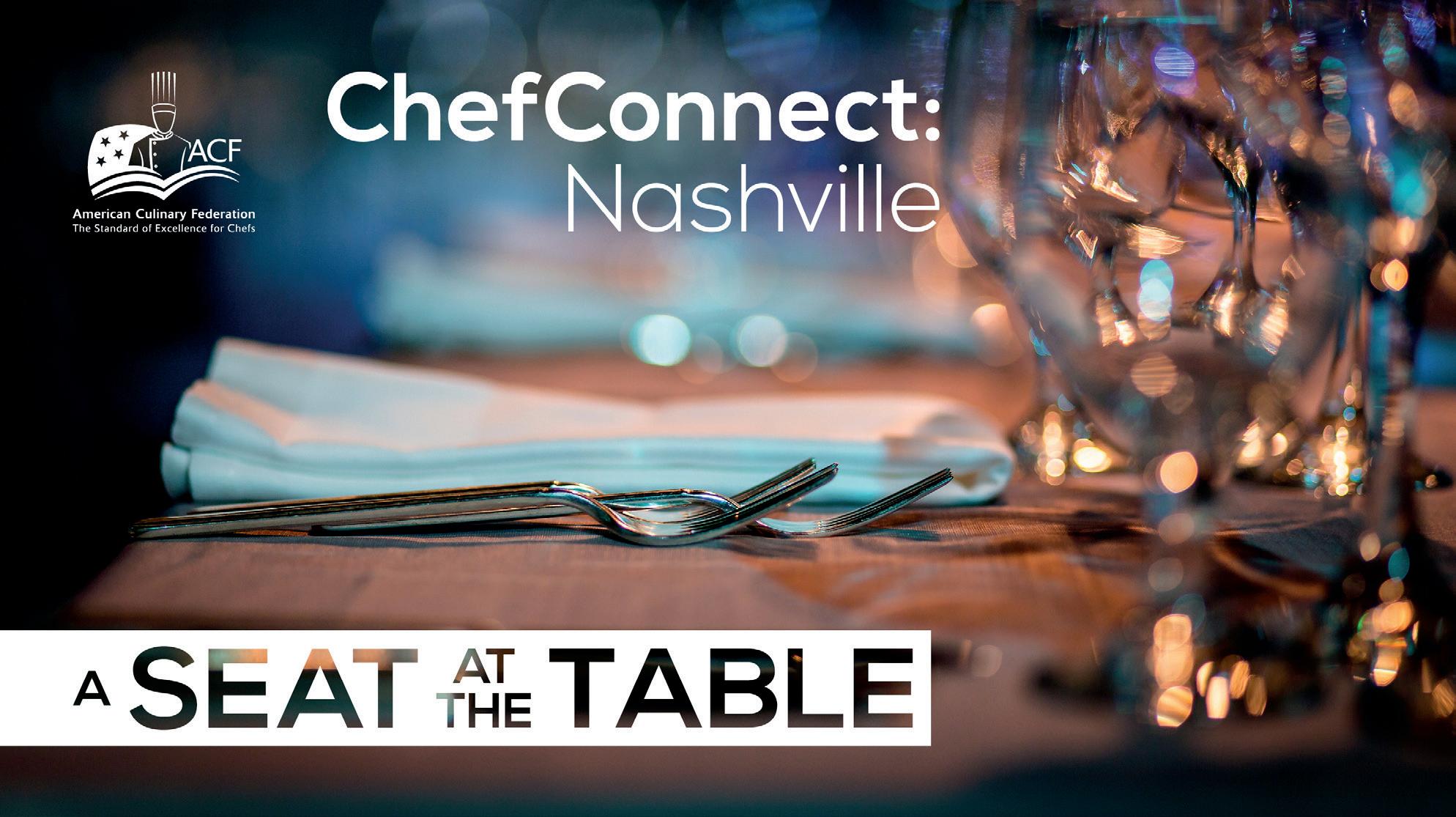
Brian Peffley, CEPC, CCE, AAC
Southeast Region ACF Chef Educator of the Year Winner
Jennifer Denlinger, PhD
Northeast Region Dr. L.J. Minor Chef Professionalism Award Winner
Kenneth Trout, CEC, CCA, AAC
Southeast Region Dr. L.J. Minor Chef Professionalism Award Winner
Gary Klinefelter, CEC, CCA, AAC
Before the coronavirus pandemic hit, leading to the cancelations of events around the globe, the 25th Internationale Kochkunst Ausstellung (IKA)/Culinary Olympics took place February 14-19 in Stuttgart, Germany. Good thing the event made it through that window because the ACF national, regional and youth teams brought home top honors.
The Culinary Olympics is the one of the oldest, largest and most diverse international culinary arts exhibitions in the world, dating back to 1900 and taking place every four years. Roughly 2,000 chefs and pastry chefs
from more than 60 nations compete—against themselves and each other—in the days-long, week-long competition drawing crowds of fellow chefs and other supporters.
ACF Culinary Team USA earned a silver and bronze at the Culinary Olympics. The team earned a silver in the Restaurant of Nations category and a Bronze for the Chef’s Table competition.

“The opportunity was overwhelmingly amazing,” says Chef Gerald Ford, CMC, team captain and founder of Legit Culinary Concepts, a consultancy. “It was really incredible to see how the competition has evolved over so many years.”
For nearly the last four years, Chef Ford (with the help of Team Manager Reimund Pitz, CEC, CCE, AAC and Assistant
Manager Kevin Storm, CEC, AAC) has led the national team’s training and practices, which took place monthly at the Fort Harrison Hotel in Clearwater, Florida, in a kitchen donated by an ACF Tampa Bay Chapter member. Outside of those meetings, team members spent countless hours developing menus and fine-tuning their techniques on top of full-time work. This goes for all ACF’s Culinary Olympic teams. In fact, the United States is often at a disadvantage compared to other countries, many of which have enough funding to allow Culinary Olympics participation to become a full-time job.
There are two main components of the competition. The “Restaurant of Nations” competition requires teams to prepare a three-course meal for 110 people. The menus are then sold to event attendees and served at their tables. The Chef’s Table competition requires teams to present seven different dishes—from dips and cold and hot plates to petit fours and a vegan course—for twelve people that that can be ready for tasting during the cooking
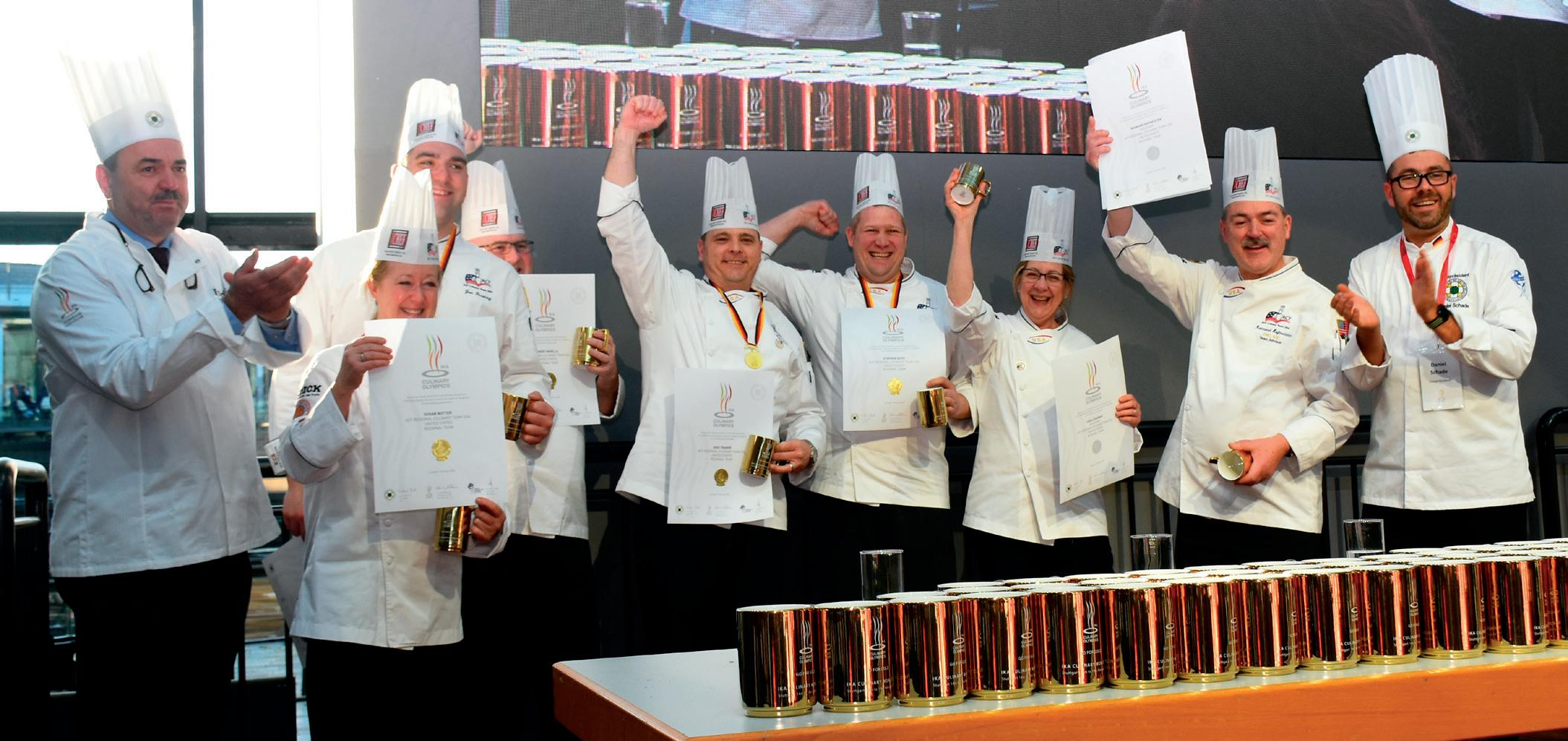
process. This is a departure from previous years, when it was not required that the buffet be ready-to-eat.
“Our team dealt with some challenges because most of us had never competed in the Olympics before, but we were resilient,” says Ford. “We worked really well together in the end and I am proud of what we were able to accomplish.”
Chef Jesus Olmedo, assistant banquet chef at The Country Club in Chestnut Hill, Massachusetts, was one team member who had previously competed in the Culinary Olympics as a member of the ACF USA Youth Team. Competing at the national level was an even greater challenge, going up against so many international teams all playing to win. “Competing at that level really pushed me out of my comfort zone,” says Chef Olmeda. “I think that no matter what degree of medal you get in the competition, just going through the experience symbolizes growth as a young chef, and the relationships I have built and skills I have developed as a result mean everything to me. There is no way to lose in this competition.”
ACF Regional Team USA maximized with a team gold, five individual golds and an impressive 3rd place ranking out of 28 other regional teams from around the world.
Manager Raimund Hofmeister, CMC, AAC, director of the School of Culinary Arts and Hospitality Management at Stratford University in Baltimore, equates it to a “Cinderella” or underdog story. After a wave of changes to the team and some challenges with funding and sponsorships, the final group was
able to come together, work hard, raise some extra cash and rack in the awards.
For the past year, the regional team, like the national team, met each month at Stratford University, where Chef Hofmeister focused on training for precision cooking and consistency. All team members, with the exception of one, were within driving distance to the practice kitchen, which helped keep costs down. Chef Hofmeister encouraged the group to socialize outside of practices, which they naturally did.
Thanks in part to the hospitality of the family and staff at the Hotel Schwanen where they practiced, the team pushed through their jet lag on those first few days of the competition, impressing the judges with an elaborate Chef’s Table featuring dishes inspired by the eastern shores of the United States.
“You would walk up to the table and see seafood dishes from Florida, and then move down to the Carolinas and MidAtlantic, just like you were taking a trip up along the coast,” Chef Hofmeister says. “The team peaked at the right time, and I believe that was the secret to their success.”
A huge advantage for ACF Culinary Youth Team was being able to work in the same kitchen as the regional team and pick up some guidance and support, says Chef Edward Adel, CEC, chef-instructor at Johnson County Community College in Overland Park, Kansas. All Youth Team members are 25 years or younger and current students at JCCC. The team earned a silver for the Restaurant of Nations category and a bronze for the Chef’s Table category, ranking 10th out of the 24 junior teams that competed.
“The discipline the students showed over the last two years is remarkable,” says Chef Adel, noting that his students had to fit regular practice into a grueling schedule combining a full day of classes followed by work. “They really refined their problem-solving techniques and organizational strategies when we got to Germany.”
The ACF Culinary Youth Team program reflects the national team program, albeit on a smaller scale. For the Restaurant of Nations three-course meal, the team chose an East Coast theme, and for the Chef’s Table category, the team presented a buffet of West Coast-inspired dishes.
“During the summer, we practiced a few times during the week and had full-time work,” team member Emily Moreno recalls. “I lived an hour away from school which made it a bit rough to travel back and forth. But, they say that good things
don’t come easily and that couldn’t be truer. But I had the incredible opportunity to really focus on knife cuts as well as on cold food garnishes, sauces and savory finger foods and desserts. As a team we dealt with difficulties and obstacles, and we made adjustments. The whole experience was one in a lifetime opportunity and we can’t thank our supporters, the ACF and the chefs who spent countless hours helping us enough. I couldn’t have asked for a better team, and the memories made with them are priceless.”
During the competition, team member Maureen Dodd admits she had some stage fright upon first arriving at the competition, but all the monthly practices and extra practice on her own time helped quell nerves and bring back her “muscle memory.” “The experience was exciting, nerve-wracking, stressful and thrilling all at once,” says Dodd, who handled the pastry portion of the competition. “After about an hour in the kitchen, my nerves cooled and we all started cracking jokes, having fun and truly trusting each other.”
The Culinary Olympics combines the same core values that reflects the ACF experience: competition, skill-building, ongoing learning, mentorship, and above all, culinary excellence.
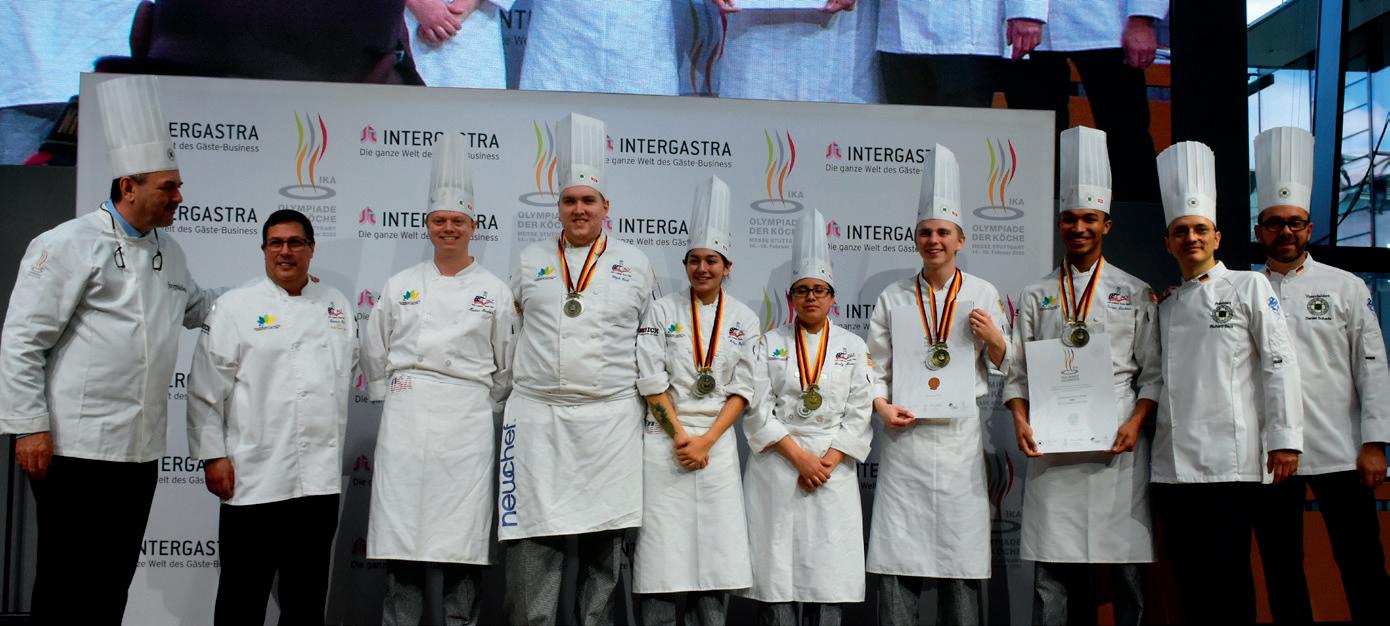
Members of this recently-revived chapter deliver meals for local children and families in need during the coronavirus pandemic
 By Amelia Levin
By Amelia Levin
The Cape and Island Chefs Association was one of the strongest associations in New England. Then, in the late 2000s, it fizzled out.
Just three years ago, however, a group of four ACF chefs was able to revive the chapter, growing the membership from zero to a little over 60, thanks to popular, monthly meetings at breweries and trendy restaurants in Massachusetts. The meetings, which have been open to the public, have featured a steady lineup of educational programming as well as handson demos, from whole hog butchery to sustainable seafood cookery, beer-making and more.
“By adding about 20 new members a year, we have developed a very diverse and dynamic membership that includes hotel chefs, private restaurant chefs, culinary educators and others, and we also get regular support from associate members and the community,” says Chef Michael Phillarella, CEC, executive chef of Wianno Club in in Osterville. He restarted the chapter with Chef Michael “Mickey” Beriau, CEC, chapter vice president and former chef of White Cliffs Country Club in Plymouth; Daniel Ferrare, CEC, CCA, treasurer, executive chef of Kittansett Club in Marion, and Chef Joseph Ellia, secretary, executive chef of The West End in Hyannis.
The chapter's partnership last year with Cape Kids Meals has become more essential now than ever. When the coronavirus pandemic hit, causing states across the country to close schools, many families worried if their children would still receive that much-needed, daily meal their schools provided. Those worries were compounded by job losses and economic hardship, threatening to cause food shortages at home over the weekend as well.
Not only did ACF Cape Cod continue to work with Cape Kids Meals to provide the weekend meals as they always had, but they have since raised extra dollars for the organization and worked with suppliers to buy product at cost. The chapter has also partnered with another organization to provide additional meals to-go for food insecure individuals and families.
“As soon as COVID-19 impacted our area and schools were closed, ACF immediately reached out and asked how
they could help,” says Tammy Leone, executive director of Cape Kids Meals, which was founded by David Byrnes and Pastor David Johnson of Grace Church in East Dennis, Massachusetts, in 2014. The program feeds more than 500 hungry students from 26 of the 29 elementary schools on the Cape by providing students at the close of the school day on Fridays with backpacks filled with food for the weekend. “In the very first week of school closures, we organized a food drive in partnership with local ACF members, who secured over $5,000 for us and helped us purchase food at a good price,” Leone adds.
In the past, to determine the kids in need, letters were sent out by the school to the parents or guardian for consent to provide them with backpacks. The bags, which include two breakfast items, two lunch items, milk, juice, six healthy snacks and two pieces of fresh fruit, were filled at one of the six packing centers across the Cape. They would then be discretely provided to the children
going to be even greater, so we joined with Faith Family Kitchen in Hyannis, which serves serves hot meals Monday through Friday to food insecure families and individuals on the Cape.” The chapter worked with other organizations, such as Cape Cod Culinary Incubator, Guaranteed Fresh Produce & Dairy Company, Buy Fresh Buy Local, The Lobster Trap, North Coast Seafoods and
ramped up food purchases and donations from the Greater Boston Food Bank, which can provide up to 7,000 pounds of food, if needed, for the effort. “Our goal is to send every child who receives a backpack home with a hot family meal for four that includes an entrée and sides to be reheated,” says Phillarella, who notes he limits the number of cooks in the kitchen to just a few chapter members to maintain efficiencies and social distancing. “Our focus is to make a nutrient dense meal with fresh vegetables, lots of beans, some pasta and very little processed food to ensure that families and students get the quality nutrition they need, and so that they can have at least one heartwarming and nourishing meal a week.”
before dismissal at the end of the week. During the COVID-19 school closures, the backpacks were filled and dropped outside at the respective school for staggered pickup.
“Within 72 hours of schools closing, our chapter was able to raise about $2,000 from our chapter members and a $1,000 here and there from other local businesses,” says Phillarella. “From there, we realized that the need to feed others in our community during this time was
Ring Bros. Marketplace, to source funds and food donations. In addition, the chapter connected with ACF Epicurean Club of Boston and ACF Rhode Island for additional volunteers and support.

At press time, the Cape Cod chapter was working on helping Faith Family Kitchen ramp up production from 350 meals a week to 500 meals the next week, with a goal of 2,000 meals a week. To do so, the chapter borrowed the closed kitchen at Cape Codder Resort, and

Says Leone, “What impacted me the most when I first met with the ACF members was their passion to give back to the community. They have been continuously committed to Cape Kid Meals from the first time we were introduced. They started by donating their annual holiday party raffle proceeds to us in December last year, and each month, they have been raising funds during their monthly meetings. We are so grateful for their help.”
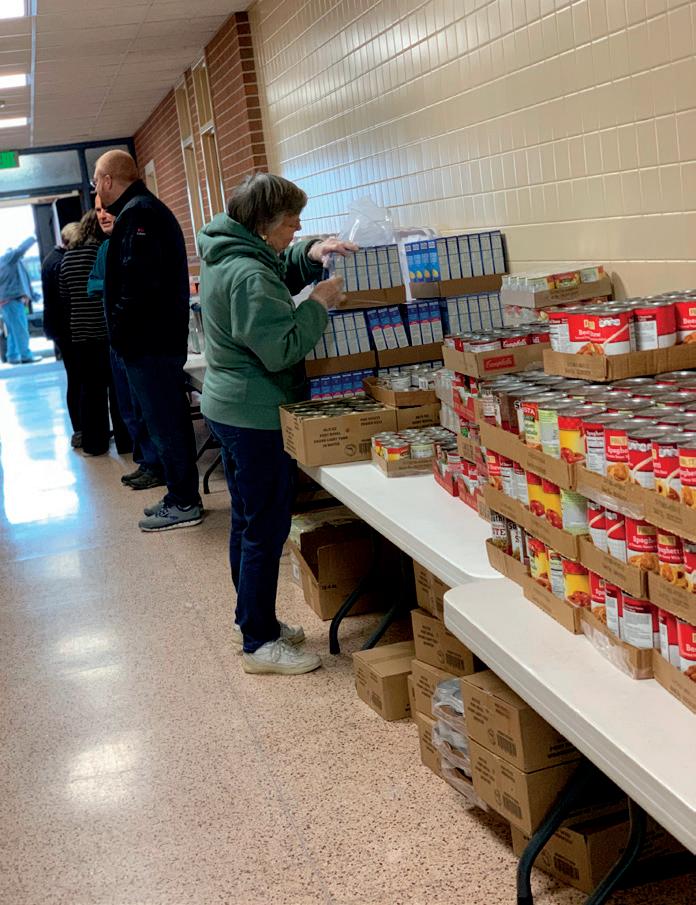
"
AS SOON AS COVID-19 IMPACTED OUR AREA AND SCHOOLS WERE CLOSED, ACF IMMEDIATELY REACHED OUT AND ASKED HOW THEY COULD HELP "
Now, instead of serving three meals a day in the dining room, he cooks up batches of food from a rotating menu and boxes it all up with his team members, who then drive the packages to doorsteps using the Pines’ van normally reserved for human transport.
He didn't have to do all this. But, people who know Chef Bostian say this is exactly the kind of person he is.
“Tears came to my eyes when I talked to Chef Jamie and learned about what he was doing to make his residents so happy during these times and to help all the small businesses around him,” says Chef Jay Ziobrwoski, CEC, a longtime friend of Bostian's and president of ACF Chefs of Charlotte. “Jamie is a powerhouse of an ACF member as well as vice president of our chapter.”
Chef Jamie Bostian, CEC, had just started his new job as executive chef at The Pines At Davidson, an upscale retirement community in North Carolina, when the coronavirus pandemic hit. States all across the country began closing restaurants, bars and other retail outlets in an effort to contain the virus.

Like so many chefs in the industry, Chef Bostian had to quickly shift gears— pivoting from traditional foodservice prep and planning for a new restaurant and bar concept on the property to essentially becoming a food supplier and delivery service for the hundreds of seniors living on the grounds.
During my interview with Chef Bostian, he speaks very matter-of-factly with his native Carolina accent; he is certainly not patting himself on the back for the work he’s been doing lately. It’s clear that he’s just passionate about feeding others, especially seniors stuck in their home because of their high-risk status when it comes to developing complications from COVID-19.
“One thing sort of led to another,” he says, noting the chain of events that led him and his team to start delivering hot meals for the residents' doorsteps. That was then followed by delivering ice cream from a local creamery, followed by delivering boxes of produce and meats from local farms, followed by donating leftover cooked food to a local food bank.
“The one thing our guests look forward to every day is the meal we
serve them, and especially now that they have nowhere to go,” says Chef Bostian. “Of course, we need food for survival, but that’s no fun and we believe food should be an experience, even if we can’t serve them in our dining room. Even though every day presents a new challenge, we are trying to make things as ‘normal’ as possible for our residents.”
Many of the roughly 400 residents are alumni or retired professors of nearby Davidson College. Of that group, about 320 residents are living in independent apartments, cottages and villas, and about 80 are in assisted living on the healthcare side. Chef Bostian’s team feeds both groups, but assisted living residents receive three hot meals a day as opposed to one.
Independent living residents place their meal orders the morning of delivery by taping their menus to the outside of their doors, which are then collected and processed by the culinary team for delivery to their doorstep later that day. The assisted living residents receive three meals per day served on trays to their rooms. Chef Bostian says his team has been going through 400 boxes a day, including various sizes of molded fiber boxes and between 300 and 400 soup containers—all of which are compostable and eco-friendly because that is important to the residents.
“We’ve been using this time when our dining rooms are closed to test new concepts and dishes because we basically have a captive audience,” says Chef Bostian. “Our volume really hasn’t changed like it has for many restaurants, even for those doing curbside, and we are blessed by that. I just thought, ‘why don’t we use our resources and power to help not just our residents, but also our community?”

That thinking led, first to partnering with Two Scoops Creamery, a local ice cream shop in Mooresville, to offer a free scoop of ice cream every Friday. Now he offers pints-to-go so there's no need to go to the grocery store. That got Chef Bostian thinking that maybe they should offer the residents more grocery items, so he reached out to local farms to bring in fresh fruits and vegetables that they box up and offer for $25. “Based on availability, we try to give them fresh berries, apples, salad mix and other produce that they can enjoy without a lot of prep work,” he says.
Next came the idea to partner with a local farm to bring in ground beef and other products. “Most of their business was through restaurants, and they put out

a social media post that they needed to sell 1,000 pounds of ground beef a week to hit their numbers,” Chef Bostian says. “We have always focused on pushing more local product, so the partnership is a win-win.”
“It’s little acts of kindness like these that really make their day,” he says.
Chef Bostian works hard each day to ensure the safety of both his team and residents. “We do temperature checks every morning when our staff get in, and any new employee and even vendors entering the building must go through a health screening,” he says.
In the kitchen, Chef Bostian has set up prep stations so workers remain six-feet apart; maintains a rule of oneperson-only for the elevators, and he and his team are constantly disinfecting surfaces and high-traffic areas. He also makes sure everyone is washing their hands regularly (and actually counting for 20 seconds), and he recently switched to a higher-grade sanitizer. In addition, alarms on the dishmachines further ensure proper temperatures.
Prior to joining The Pines, Bostian spent 11 years rising through the ranks
Chef Bostian also includes notes about the local products in the boxes to educate the residents. “It would be easy to buy product from the big guys but it’s really the smaller businesses that are hurting at this time, and we want to help them stay afloat.”
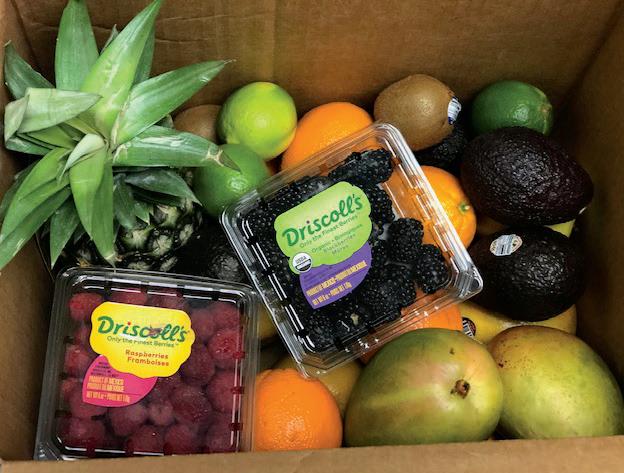
Most recently, Chef Bostian started buying spices from nearby Motown Spice for use in dishes, and he’s been talking to the owner about possibly developing smaller, retail sizes for inclusion in the grocery boxes. Each day, any extra food that his kitchen has leftover now goes to Feeding Charlotte, a local food bank, for distribution to local shelters and other sites for people and families in need. One week, Bostian’s team donated 50 pounds of food to the organization.
On the assisted living side, even though many of those meals are predetermined based on special dietary requirements, Bostian has been using the local product when he can. One week, Howard Family Farm donated a bunch of Easter tulips in vases.
at the Peninsula Yacht Club on Lake Norman in Cornelius, ultimately landing the top-tier role as executive chef. A graduate of Johnson & Wales in Charleston, South Carolina (the school was moved to Charlotte during his last year), Chef Bostian worked at various restaurants and hotels as well as at a golf club throughout the region before ending up at the yacht club.

He believes his club background and CEC status helped him land the job at the cushy retirement community that is The Pines; the directors were looking to elevate the foodservice program to make it more on par with other high-end resorts catering to aging Baby Boomers who are enthusiastic about food and fine-dining. Chef Bostian was also recruited to help develop and implement a new bar and pub on the premises as part of a multi-million dollar renovation plan. Despite that COVID-19 put the pause button on much of our lives, Bostian’s team is continuing to develop the new foodservice concepts with plans to open later this year.

“While we have many members of the Great Generation, the new generation of retired residents have different expectations and wants when it comes to food and dining,” he says. “When I worked at a club or restaurant we would always gear up for a busy weekend, but here, every day is a weekend. We are also less affected
by weather. Working at a yacht club on a lake, if it was raining we were dead, but if it was sunny we were slammed.”
On top of a nice work-life balance, Chef Bostian has enjoyed being of such service to his residents.
“I’m just very big on the thinking that if you take care of community, community will take care of you,” he says. In these times, indeed, community is everything.

“I hate to admit it, but walking into work these days is like walking into a burning building without a hose.”
Chef John Selick CEC, CCA, WCEC, AAC, is not a nurse or doctor, but reporting to the kitchens of one of Ohio’s largest healthcare systems in the middle of a global pandemic is enough to make anyone nervous. As senior culinary manager for Sodexo, Selick—who is also president of the ACF Cleveland Chapter—oversees the foodservice program and 13 executive chefs for University Hospitals’ 12-unit campus in that city.
Chef Selick’s team is on the front lines, feeding patients and healthcare workers battling the novel coronavirus at this 1,000plus bed medical center. No one on his team has walked away. Everyone is showing up, albeit they are socially distancing.

“I am so impressed with the staff here,” Chef Selick says. “I was expecting to deal with a reduced workforce because people are scared—or worse, sick. In our daily huddles, for the past 15 years, I have always tried to reiterate that our jobs are so important to the patients, their visitors and to the nurses, doctors and other hospital staff we feed. Many have nowhere to go and we need to take care of them and give them a quality, nutritious meal.” In a pandemic, when healthcare workers serving the public are like soldiers in a battle, these cooks’ jobs have become more important than ever.
Chef Selick admits he’s scared—scared, not only of contracting the virus, but of bringing it home to his wife, two daughters and high-risk mother-in-law, who is currently caring for his two-year-old while he and his wife both work jobs deemed essential (Selick’s wife is also a healthcare chef). He’s scared, like many of us, of so many unknowns.
When we talked to Chef Selick at press time, the state was on full lockdown. The hospital only had a couple COVID-19 patients in isolation at the time, but it was gearing up for a potentially much larger outbreak, designating certain floors as COVID-19-only and making plans to set up triage tents outside if need be.
In the kitchen, Chef Selick channeled his initial panic to prepare and gear up as well. Planning for the worst-case scenario, he reviewed disaster plans and menus with his superiors and began stocking up on frozen and pantry items, disposables, cleaning chemicals and sanitizers, masks and gloves. He also planned for different hospital scenarios, including preparing and delivering food for healthcare workers outside makeshift triage tents, if it came to that. He also reviewed and amended the company’s safety and sanitation procedures.
“We have protocol in place for handling infectious diseases, but we have to treat this a little differently and limit exposure as much as possible,” Chef Selick says. Kitchen staff stopped taking orders and dropping food in rooms; orders are now taken over the
phone, and deliveries go to the nurse’s stations. In the kitchen, there are frequent handwashing reminders, use of gloves and masks and hand sanitizer everywhere. If the situation were to escalate, there would be no more dishwashing; trays and permanentware would be swapped out for disposables in order to prevent cross-contamination.
“Ironically, my cooks are probably in the safest place possible right now,” Selick says. At press time, Chef Selick’s storeroom contained a month’s worth of to-go packaging and thousands of disposable trays that he hoped he wouldn't have to use.

Since visitors were no longer allowed at the hospital and dining spaces remained closed, Chef Selick’s team had more space and time to develop meals to-go for hospital staff, who were becoming too tired to deal with cooking when they got home. Selick’s team started with packaged, ready-to-heat hot meals in servings of two and four, but then realized that staff was more in need of groceries and frozen food in order to stock up at home to feed themselves and their families if their hours were extended. So, he developed a minimarket for the staff.
“We started with basic items like pints of fruit, cherry tomatoes and things that don’t require a lot of cooking, but we also saw that frozen vegetables, hot dogs and toilet paper were very popular items,” Chef Selick says. “Any trip to the grocery store that we can save them right now is key, especially as shelves are going bare.” The mini-market has become so popular, in fact, that he that he has informed his supervisors it might need to become a permanent service – pandemic or not.
Healthcare foodservice disaster menus are required by the joint commission and are typically developed with the assumption that there is no power or water because of a hurricane
or other natural disaster. In a pandemic, there’s plenty of water and electricity, but labor and supplies might be scarce. As such, disaster menus roll through fresh food stores first, moving on to frozen next, and then on to canned and dry goods.
In terms of labor, although Selick’s full team was currently in place at press time, he still had to prepare for a possibly reduced workforce if anyone were to get sick or needed to self-quarantine. In the case of a full-scale disaster, instead of offering a full menu, Selick plans to offer just the daily special or something easy like sandwiches or casseroles to streamline production. Selick has also trained his team to prepare and deliver meals for larger groups at one time using paper bags and platters, rather than serving just nine patients at a time using carts, as they usually do. Though hospitals typically have deals with their vendors to receive food supplies first in a disaster, Selick has made some last-minute calls to a few food manufacturers to lineup additional food and supplies, just in case. Other lines of communication have opened; decisions that typically take nine months with corporate now take just a few days.
What hasn’t changed, however, is Selick’s commitment to high-quality food. “We’re not serving MREs or junk or institutional food here,” says Selick. “Our philosophy is and always has been about providing the most nutritious, wholesome enjoyable and delicious meals.”
As the public stays home to help “flatten the curve” and ease the burden on healthcare workers, Selick remains steadfast on flattening his own curve with extra planning and preparation. A few weeks ago, he might not have been able to say this, but he does now with gusto: “We are prepped. We are ready.”
This is the new reality of healthcare foodservice.
The coronavirus pandemic has disrupted the catering industry and will continue to have significant consequences for an indefinite amount of time. As the virus causes widespread event cancellations for the foreseeable future, caterers have had to think quickly. For many caterers, this has meant altering their business.
We asked several ACF chefs who have extensive experience in the catering industry for their advice on how caterers can navigate the COVID-19 landscape now and down the road: Chef John Reed, CEC, CCA, AAC, Certified Cicerone, owner, Customized Culinary Solutions, Skokie, Illinois (www. customizedculinarysolutions.com); Chef Kimberly Brock Brown, CEPC, CCA, AAC, ACF Southeast Region vice president, corporate chef for Chef Kimberly Epicurean & Food Express, Charleston, South Carolina (www.chefkimberlyepicurean.com); Chef Ray Duey, CEC, owner, Chef Ray Presents, Lodi, California (www.chefraylduey.com); and Chef Jamie Keating, CEC, owner, of Signature Events & Catering by Jamie Keating & EPIC Restaurant, Columbus, Georgia. (epiccuisine.com/catering-2/).
NCR: What advice do you have for caterers moving forward to adapt their service model in response to the new environment?
JK: Visit your state restaurant association and local chamber of commerce’s websites. These organizations have information and resources on how to move forward and provide options for continued support and keeping staff employed.
RD: Talk with your insurance company about business disruption insurance.
JR: If you haven’t thought about technology such as recipe management systems, event management systems and other interfaced platforms, do so (read more about these systems on p. 42)! Caterers have to
move their business on-line. It means that purchasing, inventory, staffing, accounting and production processes need to be supported and managed by technology. Using technology will create cost savings as well as improve the customer experience, speed to market and retention in order to create an organization that is lean and nimble.
NCR: What suggestions do you have for caterers if COVID-19 requires states/cities to continue to enforce stay-in-place orders?
JR: If you haven’t already done so, add online ordering. Also, work with other foodservice organizations that may be serving a particular need today. There also may be opportunities to work out agreements to use equipment and facilities at a reduced or adjusted rate. Finally, this is not the time to outbid each other, but to unite the community to speed up the recovery and get everyone back to work—collaboration is good.
KB: As a means to make some income, one could partner with another food outlet to service local government offices, first responders and healthcare workers. Also, market yourself as a meal-to-go company by selling packaged meals and snacks online for pickup or delivery.
JK: It is the perfect time to take a step back, recreate, cleanse, rebrand, re-train and try to relax.
RD: I’d offer pickup or delivery will help to minimize the financial impact of the current stay in place orders. And, I’d plan for a grand reopening bash or gala when the time is right to reopen.
NCR: If—and when—life gets back to some normalcy, what can caterers do to help to ensure customers their business is safely serving food?
JK: It’s important to communicate with clientele publicly—whether published
COVID-19 has forced caterers to make some tough choices in planning for the future.
and posted at your facility, on your website or attached to an email—the precautions your company has adopted to ensure proper food service safety. Also, use the required EPA-registered sanitizer products when cleaning and sanitizing work surfaces; check labels to ensure products are safe to use in food manufacturing areas, and coordinate with your local health department on the state’s guidelines. Then, post them where they can be seen.
KB: Now more than ever, a chef should advertise their credentials of management, sanitation and nutrition. Employees not practicing proper sanitation skills will be monitored by management and the public they serve.
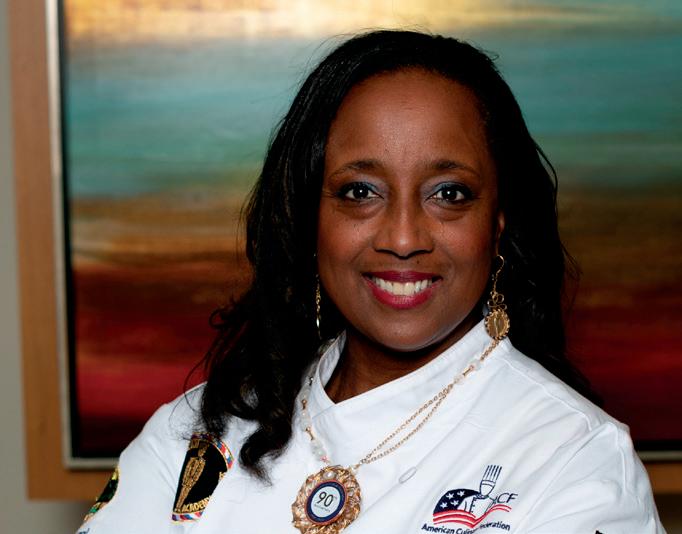
JR: There will be a need to rethink the service of food to customers. Whether it’s a plated event, reception or delivery program. Food safety and sanitation as it relates to protecting your employees and especially your customers will require planning prior to the first event after this when we can congregate. There are many touch points in the preparation, presentation and service that have to be considered.
NCR: Customers are purchasing gift certificates from their favorite restaurants for future use in order to help generate some revenue. Is this an option that caterers should consider?
JK: I think it’s important to remember that there is a large percentage of workers filing for unemployment. I do not suggest offering to sell gift certificates for catered events. There are too many unanswered questions about the future of catering and events. I do suggest, however, selling gift certificates to purchase nightly family meals and/or meals for the week.
RD: Launch a rewards program to encourage customers to make repeat purchases for pickup and/or delivery orders.
NCR: What should caterers do to have a business plan in case a similar event occurs in the future?
JK: Make sure you have your finances in order and an excel sheet with all vendors, clients, accounts payables and their contact names and numbers. Have all required documents on hand to submit to banks if in need of financial assistance. Make sure taxes, profit and loss, and financial statements are up to date. Review contract language to help protect your business.
RD: After we return to some normalcy and businesses start to bounce back, I’d suggest starting an emergency fund to help with fixed costs and payroll if your business gets interrupted in the future. I’d also advise adding a 1 percent fee to all orders, which could help build the emergency fund.
Rob Benes is a Chicago-based food industry writer. He can be reached at robbenes@comcast.net


 John Reed, CEC, CCA, AAC
Kimberly Brock Brown, CEPC, CCA, AAC
Jamie P. Keating, CEC
John Reed, CEC, CCA, AAC
Kimberly Brock Brown, CEPC, CCA, AAC
Jamie P. Keating, CEC
Fried green tomatoes have always been the ultimate comfort food for many Americans, but in the wake of the coronavirus pandemic and resulting economic crisis, everyone in the country can benefit from this bear-hugging dish. “As life gets more complicated, comfort food like this reminds us of secure moments in our life,” says Chef Gerald Ford, CMC, founder of Legit Culinary Concepts, a culinary consultancy. “Fried green tomatoes are very seasonal at this time, especially if you have a garden, but I’ve never had trouble sourcing them from a purveyor.” Legend has it that the idea for the dish came about many years ago when gardeners and farmers, not wanting to waste food, had to come up with ways to make the tart, underripe tomatoes more palatable when they fell from the vine to the ground too early. Traditional preparation is to dredge thick slices of the tomatoes in wellseasoned flour, followed by a simple egg wash and then into a mix of seasoned breadcrumbs and/or cornmeal before frying them in oil in a hot skillet until browned. In the past, Ford’s Southern clientele have tended to prefer a little sweetness, so he’s served the dish with tomato jam made from red tomatoes. Other traditional accompaniments include hot sauce or remoulade.
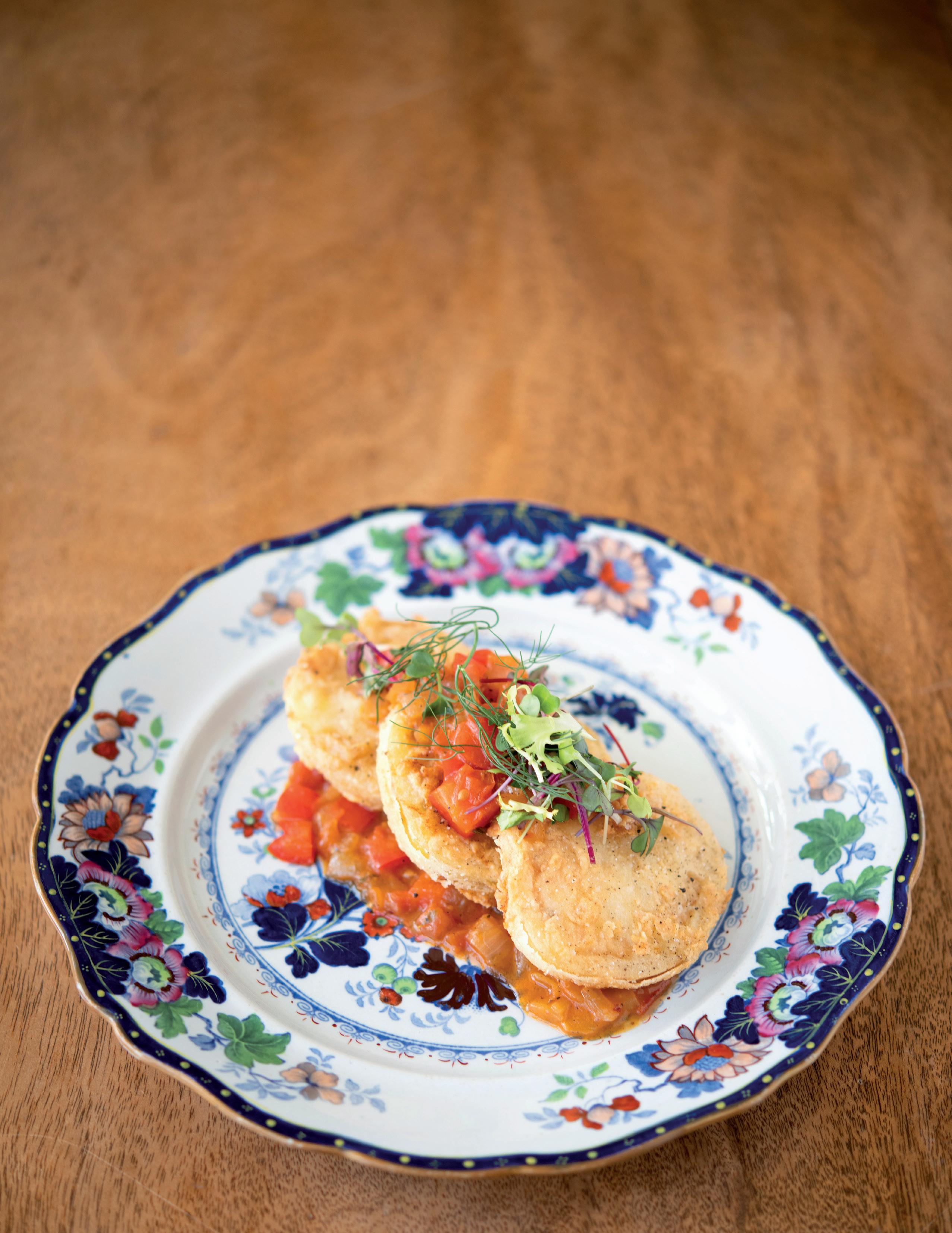
Fried green tomatoes, other than providing comfort, also offer a blank slate for chefs to flex their creative muscles. “These days, when going to the grocery store feels like a scene out of ‘Chopped,’ I like to work with green tomatoes because they are simple and homey, but so much fun to dress up,” says Ford. “Although I like to keep things simple, green tomatoes can take a little dressing and you can ‘chef’ them a bit.” For a modern spin on fried green tomatoes, Ford takes inspiration from a classic tomato Provençal dish with cheese and breadcrumbs. He first splits the tomatoes in half, scooping out the flesh, but don't throw it out, he says. Marinate it in vinegar and olive oil for later use in a dressing, or make a jam out of it. After quickly broiling the tomato cores to coax out any sweetness and make the skins easier to peel off, Ford stuffs each with fresh burrata cheese and tops them with an herb and butter breadcrumb mixture before setting them under the broiler until bubbly and browned. Accouterments may include an easy aioli made with spicy mustard, lemon juice and garlic; a spicy tomato-bell pepper-jalapeno chutney; bacon and tomato jam, and/or pickled grape tomatoes. A topping of deep-fried, leftover tomato skins adds extra crunch.
See the classical and modern recipes as well as more photos at wearechefs.com.
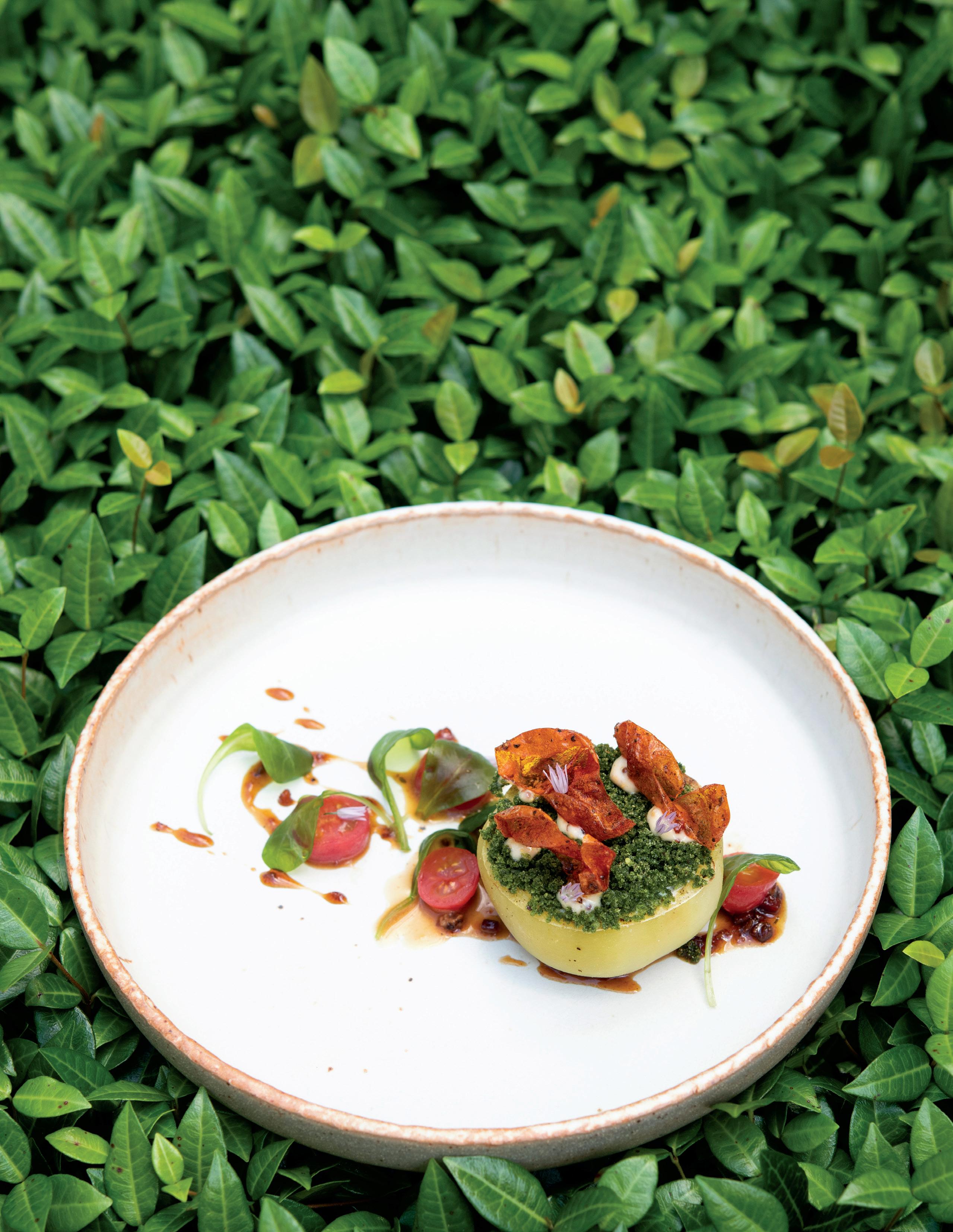
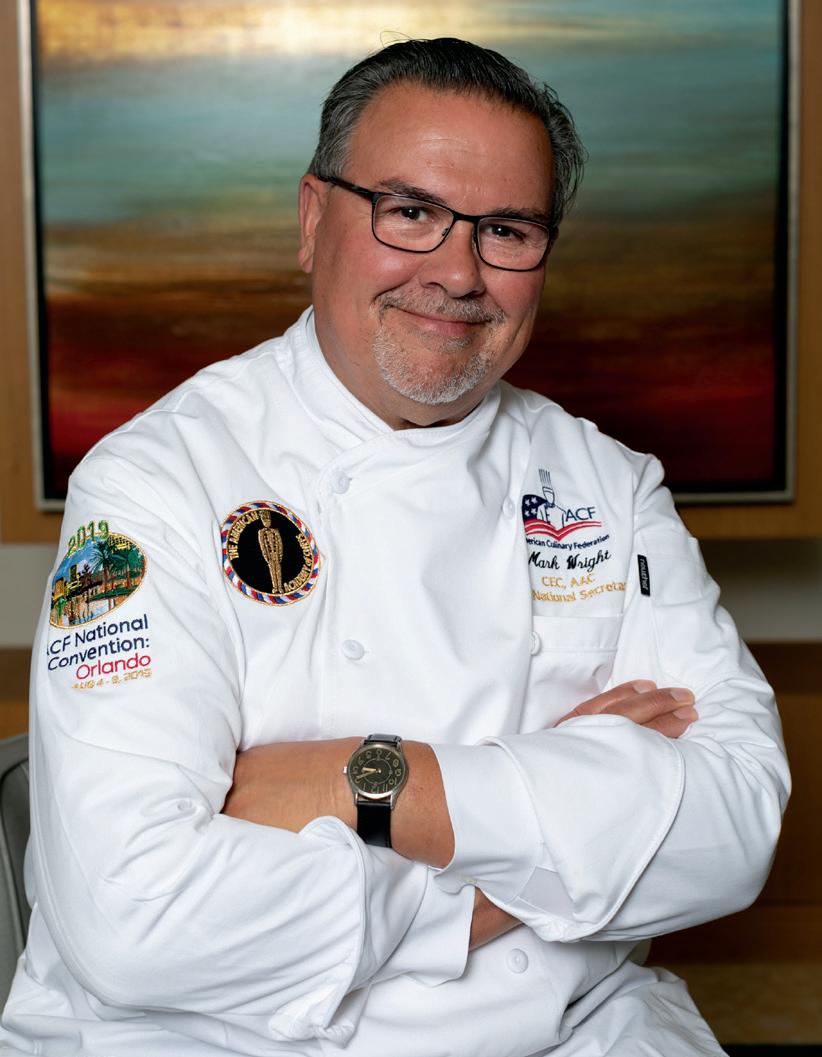 By Kelsey Casselbury
By Kelsey Casselbury
Some academic courses lend themselves to remote instruction. Culinary arts, which so often requires handson activities, however, isn’t as adaptable as something like, say, computer programming—but that hasn't stopped instructors and students around the country from adjusting to a new normal during the COVID-19 pandemic.
Perhaps an instructor’s most important task—beyond keeping an academic discourse alive—is mentoring their students, keeping them engaged and advising them on a future in food, even when the restaurant industry is under extreme duress due to state-mandated closures and limitations on serving food.
Going from regular, in-person classes to 100 percent remote learning is a feat that hundreds of schools across the United States have undertaken, for better or for worse. “There was an initial adjustment for many [students],” says Chef Colin Roche, Ph.D., CEC, CCE, an instructor at Johnson & Wales University in Miami and host of “The Chef Educator” podcast. “But, they all seem to have made the transition to remote learning, and it is working well.”
Instructors, too, have made the transition by uploading videos of culinary demonstrations, hosting town hall-style Zoom sessions and taking other measures to ensure that culinary students are still getting the lessons they need to succeed in the culinary industry. “It’s remarkable how much they’ve pushed forward with this and have gone the extra mile,” says Chef Mark Wright, CEC, AAC, department chair and associate professor at Erie Community College in Buffalo, New York.
In making that transition, instructors have had to think outside the box, remarks Chef Phil Copper, culinary arts instructor at Worcester Technical High School in Newark, Maryland. He notes that he started taking an online approach at the beginning of the school year, which made adapting to remote learning a little bit easier. “I learned how to use iMovie and started filming myself cooking at home,” he shares, noting that he’s since created a YouTube channel.
However, when it comes to getting students to cook themselves, the logistics get a bit trickier. “I can’t require every kid to cook because not everyone has the financial means or access to ingredients,” Chef Copper says. Instead, he asks them to complete assignments such as watching a cooking show on TV or reading articles in food magazines and writing a summary on what they would do differently. “I’m just trying to keep students connected to culinary, engaged and thinking about it,” he adds.
At the collegiate level, many students—especially seniors almost ready to graduate—had internships this semester. Like so many other restaurant workers, however, a number of those students are no longer working. “Many were laid off or furloughed,” says Chef Roche. “Others have been able to keep their positions, depending on the type of position they held.”
Chef Darin Nine, chef-instructor at Marion Technical College in Ocala, Florida, also saw his students lose jobs and internships. “The students from the class I have all had jobs, but now they’re all unemployed, though a few still have a couple hours a week,” she says. "It has devastated them."
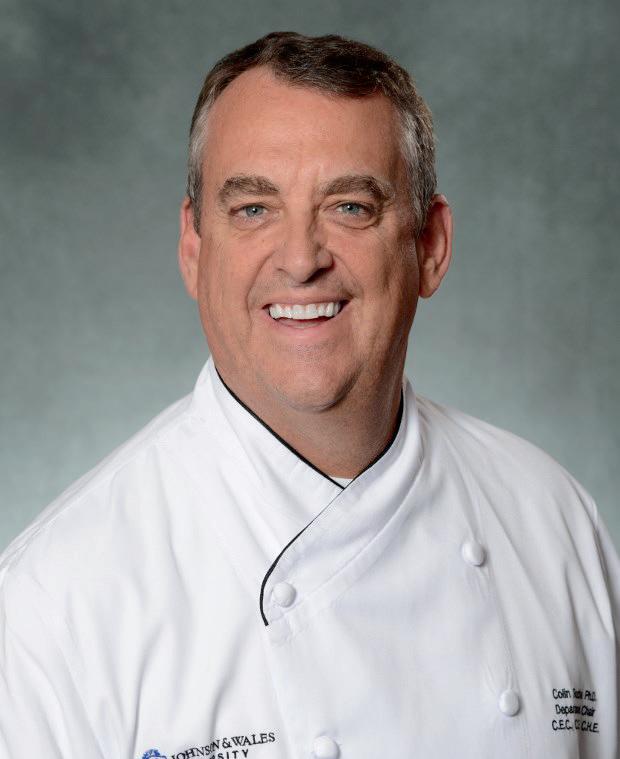
To keep their spirits up, Chef Nine tries to stay connected to the students, who have set up their own group chat. “I’m monitoring it and adding information and resources to it all the time,” he says. “I’m making phone calls, too. It takes me four
hours to call all of them, so I’m calling three or four every day.”
The pandemic won’t last forever and, eventually, things will return to normal—but it might take a while. Many instructors feel a responsibility to stay optimistic while also encouraging students to take this time to understand what their future in foodservice will require.
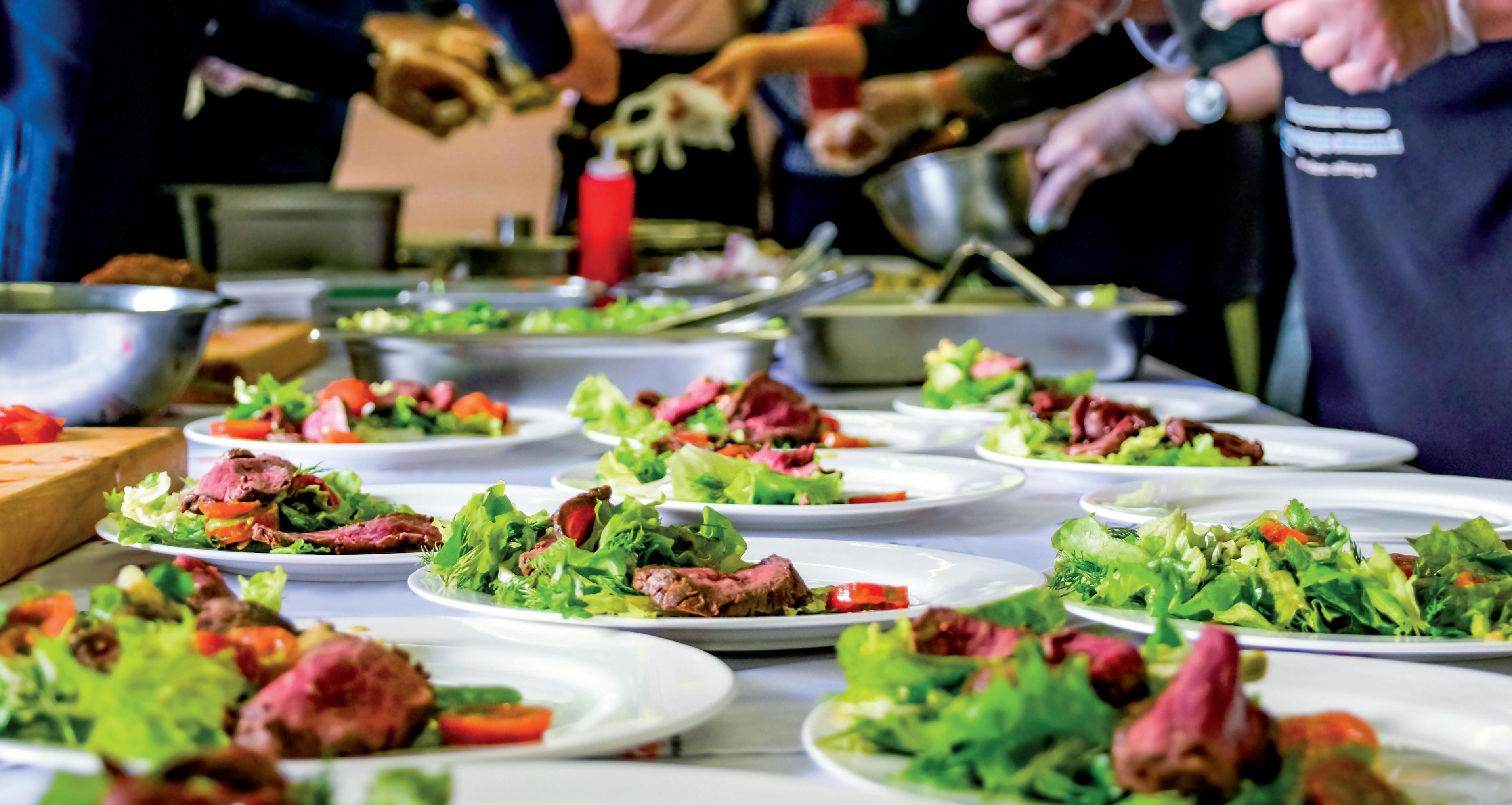
“I’m encouraging [students] to hone in on their skills and take this time to reflect on what they really want,” Chef Copper says. “A lot of students say they want to be a chef, but do they really know what it means? The industry is demanding and hard—I’m using this an opportunity to have the them look at their future, dig deep and figure out what they really want.”
Chef Wright also muses that, in the near future, formal education in culinary arts might make a student’s resume stand out more among the competition. When restaurants are allowed to return to normal operating status, “we’re going to have an abundance of help,” he says. “Bigger companies will be looking for that degree.”
ACF and other certifications, too, give those who have recently graduated a leg up on the competition. “I think
they can use certifications, along with work ethic, passion and love of the business as well as the experience from such a program to their advantage versus someone off the street trying to gain advancement and employment in the industry,” Chef Copper notes.
As for those students who are ready to graduate, Chef Nine hopes that they can celebrate their accomplishments sooner rather than later. “We are on track for graduating 15 students this year, but obviously graduation has been canceled,” he says. “These kids have come a long way and worked really hard. We keep talking about the light at the end of the tunnel. I just try to remind them that we’ll have a steak dinner at some point along the way.”
When school suddenly closed in the wake of the COVID-19 pandemic, Chef Susanne Ebacher-Grier, chefeducator at J. Everett Light Career Center in Indianapolis and president of the ACF Greater Indianapolis Chapter, felt left in a lurch when it came to figuring out how to continue to educate her high school students from home. That’s when a fellow ACF member alerted her to KP Culinary Arts, an online educational platform designed for culinary arts and foodservice programs at the high school and post-secondary level that can be used to supplement existing curricula. The cloud-based, content management platform contains a curriculum developed by a team of chefs with more than 1,500 pages of content and 340 detailed, instructional videos organized in 18 chapters, including culinary career pathways, menu development, safety and sanitation, restaurant management, garde manger, stocks and sauces, pastry and more. KP Culinary Kitchen is currently being offered free for culinary instructors nationwide looking to supplement their instruction for the rest of the 2020 school year.
“What I like about the program is that it reads aloud to the students, which is especially helpful for some of my special education students who are more auditory learners, and it keeps everyone a little more on track,” Chef Ebacher-Grier says, noting that the program also uses games and modules to ensure comprehension in a fun way. Better yet, the curriculum can be accessed via smartphone as an alternative if students do not have access to a home computer or
Internet access. “They are already glued to their phones, so this makes for a fun way to learn,” she says.
Nai Wang, a self-taught programmer and tech expert founded KP Culinary Kitchen in 1997 based on a passion for food, having grown up in the industry, thanks to his parents' restaurant. He explains that the platform uses artificial intelligence to gauge mastery of concepts. For example, if a student is studying garde manger, the quiz won’t simply grade all the answers for a flat score; rather, it zeroes in on the students’ strengths and weaknesses, giving the student a green light for salads, but maybe a red light for dressings, prompting him or her to go back for further study. Students also get to collect points and badges as they progress.
“Nothing beats hands-on learning, but if we can offer an extra way to educate students and get their intellectual level up during this challenging time, this is an easy way to do that,” he says.
In addition to keeping her students engaged with KP Culinary Kitchen, to keep spirits up, Chef Ebacher-Grier has been writing notecards to check in and also gauge the mental health of her students, some of whom worry about when they will get their next meal. “It’s like my 7-year-old says to me—hearing from her teacher when school is closed has been very comforting to her,” she says. “I just want to let my students know that I am there for them and to offer as many resources for them as I can during this time.”
- Amelia LevinOn the morning of March 26, Chefs Carlos Gaytán, Jose Sosa, Daniel Espinoza and Dudley Nieto gathered at Tzuco in Chicago. The four renowned chefs boxed groceries and other essentials donated by their local Sysco distributor to feed laid off and furloughed restaurant workers.

Every Saturday since March 21, Chef Matt Spinner, executive chef and partner of Cleveland’s Ushabu, has been supplying food to nearly 50 foodservice families. The restaurant’s pop-up farmers market was created with the help of local and regional distributors such as Sirna & Sons and Northern Haserot as well as the brands Pernod Ricard and Brown-Forman.
And, in Los Angeles, restaurants such as Spago, Kismet and Roberta’s are regularly selling boxes filled with fresh produce in order to support their local farmers. Similar scenarios are taking place all around the country as the industry bands together with a common goal of keeping everyone working, connecting and surviving.
“If we’re going to come out of this with any semblance of normalcy, we need to turn to each other because we’re all we have when it comes down to it,” says Chef Spinner. “When it comes to restaurants and chefs, we’re really just small families.”
While there may be some empty shelves at local grocery stores, the International Foodservice Distributors Association says that there’s no cause for concern. The food supply chain is secure.
Meghan Cieslak, IFDA's director of communications and marketing, says that restaurants are seeing a devastating loss in sales, and those losses impact foodservice distributors as well. But, entrepreneurs know how to respond quickly. “Restaurants are shifting to take out and delivery, and in some
instances, delivering groceries and supplies,” she says. “Many of our members are now selling direct to consumers.”
Suppliers are ever resourceful when it comes to redirecting food that may not be needed by restaurants right now. “We're working with schools and food banks across the country to ensure that they have enough fresh produce available,” says Mary Coppola, vice president of marketing and communications at the United Fresh Produce Association, who estimated at press time that losses to the food supply chain are currently topping $1 billion per week. “In a lot of cases, these are donations, so it’s a loss of sales, but it’s not a loss of healthy, fresh produce.”
In addition to donating 2.5 million meals to those in need, at the end of March, Sysco stepped in to help retail grocers. The company acted as a third-party trucking company, transporting supplies, supplying fresh produce and meat, and, partnering with Kroger to lend temporarily furloughed employees to Kroger stores where they were needed most.
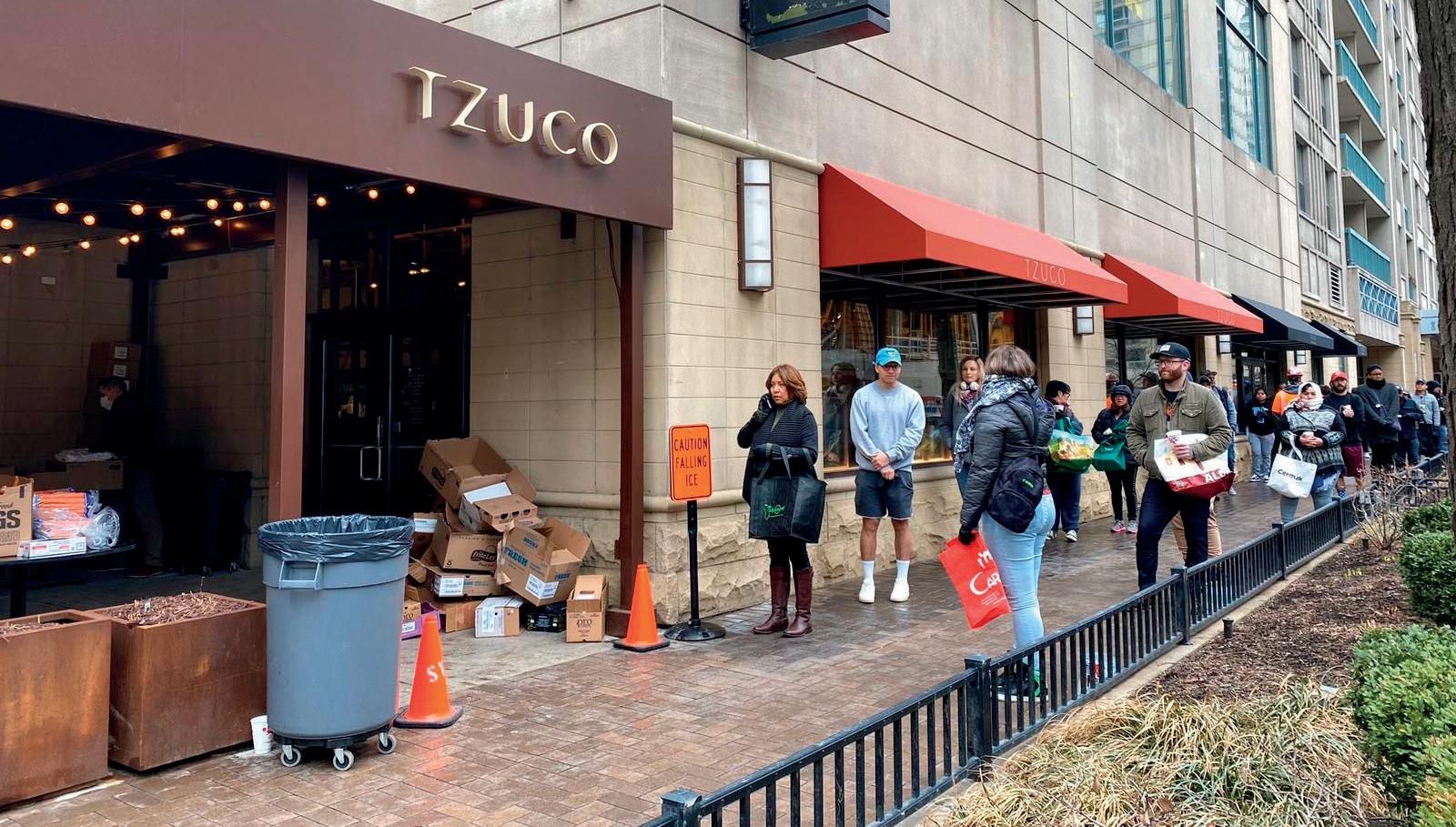
While continuing its support of the armed forces and healthcare industry, US Foods has
teamed up with Frontera Grill’s Chef Rick Bayless to help provide food and income relief for workers in Chicago, and is assisting World Central Kitchen, the nonprofit founded by Chef José Andrés, to aid the organization’s Chef Relief Team in distribution and delivery of food and supplies across California, Arkansas and Washington, D.C.
Distributors with excess supply continue to seek partnerships with those under demand strains, according to Cieslak. IFDA has teamed up with the Food Industry Association on an ad-hoc partnership that connects foodservice distributors that have excess capacity of products, transportation services and warehousing services with food retailers and wholesalers to fulfill needs at grocery stores, which are experiencing skyrocketing demand.
The entire industry is working through the same situation. Now is the time to ask for—or offer—help.
Reach out to local, regional and national suppliers for ideas and assistance. Not only will you find online links to valuable information and resources, but you may find additional, unexpected insights. “Your foodservice distributor's culinary team can help with cost-effective modifications for making your menu items more carryout friendly,” says Chef Laura Vaughn of US Foods.
Distributors across the country are donating food in lieu of it going to waste. If you need assistance, don’t hesitate to look for it. Industry workers were recently invited by Premiere ProduceOne to shop three of the company’s Ohio warehouses for fresh produce at no charge.

Don’t forget about your local farmers and vendors. Continue sourcing from them if you can. Also, consider marketing a vegetable box on your to-go menu. With so many farmers markets around the country suspended, consumers are looking for other ways to get fresh produce other than from grocery stores, where shelves might run bare. Chefs selling direct from the farm to the customer can fulfill this need.
Now more than ever, it’s important to keep the lines of communication open with your suppliers and distributors. Let them know where you’re struggling and how they may be able to help. “The fresh produce growers and distributors are craving opportunities to keep their food in the supply chain,” says Coppola.
Continue to nurture the relationship you have with your local suppliers. With so many restaurants closed, or only open for delivery or takeout, some chefs, like Chef John Selick, CEC, CCA, WCEC, AAC, executive chef and senior culinary manager for Sodexo/University Hospitals in Cleveland, wonders how small, local suppliers will survive. “I’m worried that when all of this is over there will just be three suppliers,” he says. “I worry about the local meat guy. At the end of the day, I don’t think anyone wants a monopoly or wants to see people lose their jobs.”
Businesses are changing and evolving every day, so change with them. “Be as flexible as possible right now,” says Anthony Sirna, head of business development at family-owned Ohio food distributor Sirna & Sons Produce. The company built an online grocery store to help feed its neighbors and employees.
In the meantime, figure out what works best for your individual business and have a conversation with your supplier. Adjust delivery schedules and routes and examine your inventory. “Be flexible with product types because inventories may be lower than usual,” says Sirna. “Call to ask which products are best buys.”
Everyone is experiencing challenges right now. Ciselak predicted at press time that foodservice distributors will lose $24 billion in top line sales, receivables and perishable inventory over the next three months due to the coronavirus crisis.
“I think that in this climate, and through this crisis, one of the most inspiring things has been seeing how we lean in and help each other in a way that other industries don’t necessarily do,” says Spinner. He, like so many in the industry, believes that doing something is better than doing nothing. “We’ve been telling ourselves that it’s not a lot, but it’s something. That mentality helps us through the day-to-day, and eventually, we’ll get through this thing.”
 By Samantha Lande
By Samantha Lande
This is an unprecedented time. COVID-19 has drastically changed the landscape for chefs and others in the hospitality industry. Whether your work is completely shut down, modified or still very busy, there is no denying that we are in a time of change. And, although change can be tough, it can also offer a time for reflection. We spoke with three ACF members on what they are doing to better themselves and their operations for what’s to come.
In tough times it’s important, first and foremost, to take care of yourself. For Chef Tiffany Poe, CEC, MGT, founder of Tiffany Poe Culinary Services and former senior corporate chef for CFS Brands, that means following a recipe of “seven ingredients.” Her mix includes education, clean eating, hydration, exercise, spiritual wellness, focusing on visions and goals, and maintaining positive connections.

“We have to think of the things we can control,” she says. “It’s important to lay a proper runway now.”
If you are feeling overwhelmed, the idea of taking these steps does not have to be daunting. Choose a few things that work for you and start from there. Chef Poe also encourages asking for help. Reaching out to mentors and other industry relationships you have is a great start.
“People are willing to help, and especially right now—whether it’s by offering advice, encouragement, networking or mentorship,” she says.
Even simple things can make a huge difference. Chef James Corwell, CMC, founder and chief innovation officer for Ocean Hugger Foods, maker of plant-based alternatives for seafood proteins, says, “focus on an improved diet; get out to walk and run, it’ll give you a better outlook and more sustainability in the long run.”
Remember your home kitchen? Many chefs spend all day cooking in their restaurant kitchen and are often too zonked to cook at home. If you have extra time right now, Chef Corwell suggests stepping back into your home kitchen. “Get raw ingredients and keep cooking at home; it will make you a better cook and save you money,” he says. “Strive to be healthier—focus on whole grains and vegetables for enhanced energy.”
Spending time in your home kitchen may inspire new menu ideas as well because it helps you reconnect with why you started this journey in the first place. You can even involve family members.
Chef Russell Scott, CMC, director of culinary at The Club at Carlton Woods, a golf course outside of Houston, Texas, has found that having an adaptable menu is key to his success currently and in the future. As such more chefs can have an arsenal —from what they’ve developed at home or in their restaurant kitchens— the better. At press time, Chef Scott was continuing curbside pickup out of one of the club’s kitchen, while the other kitchen remained close. With the extra space and time, he has enjoyed playing around with his menus and thinks that won’t change in the future. For curbside pickup, he tailored his menu to a handful of popular dishes, plus a couple daily specials.
“Customers have a lot of choices so we have to distinguish ourselves with quality, selection, creativity and precision, more so than ever in the future,” Chef Scott says.
Perhaps one of the positives to come from this pandemic is that it forces everyone to slow down and care about the wellbeing of others. Chef Scott regularly asks his staff about their physical and mental health, as well as that of their families. The team has also slowed down to work on skill development, precision and consistency in order to make sure there are no mistakes. “Each carryout could make or break a return customer at a time when people are weary of ordering from a restaurant,” he says. “We are double- and triple-checking everything right now.” And, although it’s important to look ahead to some degree, many caution putting permanent plans into place because there is so much unknown. “Most of my time has been spent retooling the best plan for now– watching and helping hone skills with my chefs each day.”
Everyone quoted in this article agrees that although things will go back to normal, it will be a new normal. What that will look is still to be determined, but it’s helpful to envision how you might fit into the larger scheme. “I believe people will crave hospitality, but the way we deliver it will have to be different for a little while,” says Chef Poe, who wouldn’t be surprised to see the return of true hospitality and maître de type positions meant to create those special experiences people want. “Everything shifted – the way people are perceiving social interaction has been disrupted. Reimagine, reframe and reassess, moment-by-moment, on how we deliver that again.”
The restaurant in our new normal may also include different roles. As many restaurants currently toy with carryout and delivery, some are considering taking those
roles away from third-party delivery in the future and bringing them in-house to save money and also provide more jobs. Workers, managers and company leaders who can think quick and act like jacks of all trades may be better suited for the new environment.
“Restauranteurs will look for more value in their workforce, both in how much they can produce and how much they know,” says Chef Corwell. “For the bright-eyed, bushy-tail culinarians, there will be opportunity to be had.”
As chefs continue to go through multiple iterations of “normal,” those who can remain adaptable and be willing to shift at a moment’s notice will be the ones to succeed. But the stepping stones to get to that level all start now.

Editor’s Note: this article was part of regularly scheduled content prior to the novel coronavirus pandemic. We decided to retain it for this COVID-19 special issue as a reminder to stay connected and ask for help if you need it, and to keep your team, friends and loved ones close.
Celebrity Chef Anthony Bourdain’s suicide in June of 2018 made headlines around the world. Other chefs have taken their lives too, but aside from close family and friends, few ever hear about it. The problem isn’t epidemic; some professions have an even higher suicide rate. But, chefs are beginning to speak out, believing that one suicide in the restaurant industry is one too many.
What causes chefs and other foodservice workers to opt out permanently? Drug and alcohol addiction certainly are causes, but there are others. Stress, a lack of self-worth and
 By Suzanne Hall
By Suzanne Hall
the need to succeed and keep succeeding as well as loneliness can push members of the restaurant industry over the edge.
“Loneliness plagues all of us,” says Chef Kate Button, CEO and executive chef of Katie Button Restaurants in Asheville, North Carolina. “We work into the late night and late nights tend to be lonely.” Button doesn’t believe that the restaurant industry causes suicide. “But, we could to a better job of helping people,” she says. “We have to pay attention to the fact that the people who work for us are people.”
To help prevent suicide among their employees and colleagues, chefs around the country are reaching out and telling their employees, “I’ve Got Your Back.” In fact, that’s the name of a program started by Chef Patrick Mulvaney, chef/owner of Mulvaney’s B&L in Sacramento, California. After a particularly difficult period when four
people in Chef Mulvaney’s restaurant family took their lives, he decided to take action. Chef Mulvaney met with others in both the restaurant and mental health fields to develop a plan that could alleviate—and hopefully eliminate—the problem. Knowledge and communication are key elements. Often, that communication comes from co-workers who are trained to reach out to those in trouble and then guide them to help.
Chef Button requires all of her managers to get Question, Persuade and Refer (QPR) certification, which is like CPR for mental health and trains people to ask themselves and others, “are you thinking about dying or killing yourself?” The program affirms that simply asking the question won’t
prevent someone from committing suicide or even thinking about it; rather, it’s an expression of care, and responses help determine if someone needs help.
“By not asking, you are avoiding the situation,” Chef Button says.
Chef Mulvaney tries to create an atmosphere where it is “OK to not be OK.” He encourages and trains employees to look out for each other and themselves. When they come to work their shift, employees pick one of four colored cards. One stands for “happy,” while others stand for
Opposite: Katie Button, executive chef and CEO of Katie Button Restaurants in Asheville North Carolina, is a hands on chef who stays in touch with her customers.
From top: Hugh Acheson, chef-owner of several Atlanta-area restaurants, believes that chefs are talking more and more about mental health issues in the restaurant industry; Chef Katie Button believes that loneliness can be a problem for those in the restaurant industry. To help alleviate that, she pays for an employee counseling service.
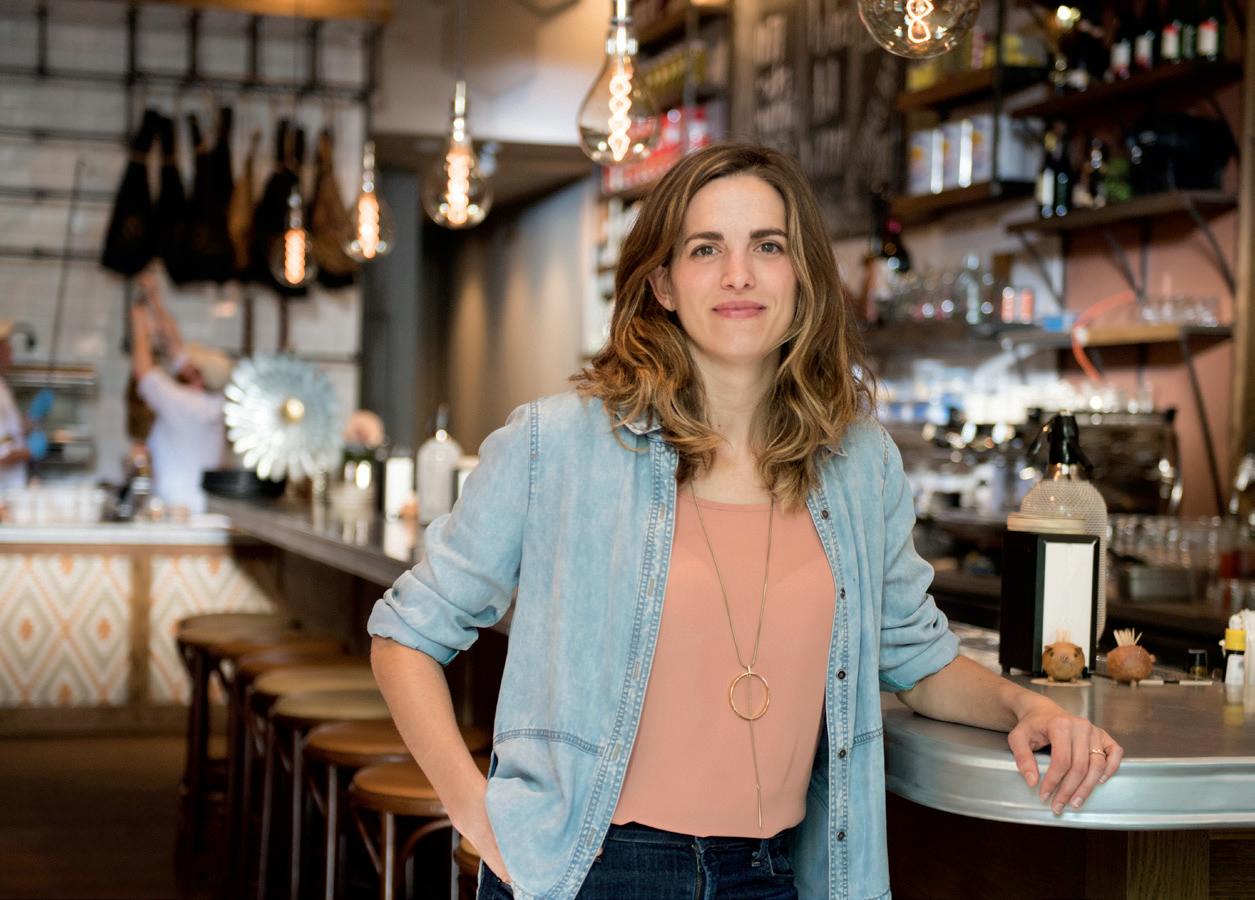

“ WE HAVE TO
To help those in potential danger, Button pays for an employee assistance program that offers five free counseling sessions for employees and those with whom they live. Counselors also help employees with long-term care.

Mental health has always been an issue in the restaurant industry and many others. In the past, it has been a problem that people didn’t talk about or know how to eliminate. That is changing. Even if they aren’t involved in any formal program, “chefs, owners and others are talking about it at conferences and symposiums,” Chef Acheson says.
“neutral,” “angry” or in the “weeds.” Each day, someone is designated to check the box to gauge the mood of the staff, and if necessary, too open up a conversation about it.
“‘I’ve Got Your Back’ encourages people to be there for each other,” Chef Mulvaney says, noting that the cards help people learn the techniques to recognize and help those in danger by tracking down the resources that can help them. “It has helped raise more awareness about mental health,” he adds.
Chef Hugh Acheson, chef/owner of four restaurants in Georgia, regularly talks to his staff about how they deal with stressful routines, heavy workloads and essentially working every day in what he calls ‘the emergency room of hospitality.’ “We need to be more aware and supportive of people; we need to know what they are going through,” says Chef Acheson, who also encourages his employees to seek help by posting information about hotlines, clinics and other resources. “We also try to keep a watch out for others.”
Chef Mulvaney is encouraged by the support he has received throughout the Sacramento community. “It has changed the restaurant industry here; people have put a lot of money into improving mental health for the whole community,” he says, noting that even customers have come in and talked about someone they knew who committed suicide. “The restaurant, in some way, is the center of American culture, and we are examples for others.” Chef Mulvaney’s wildest dream is not to lose anyone else. “If we don’t, then that’s the victory.”

There’s no doubt that the restaurant industry is in general fraught with stress. From the chefs and cooks in the weeds to the overwhelmed dishwashers, tension is never far away. Front of the house staff often have to deal with rude or disgruntled customers as well as the occasional late or misplaced order. The coronavirus pandemic—with its restaurant closings and social distancing requirements—has only added extra stress and anxiety.
To lessen or even overcome these conditions, it’s important to know the difference between them.
Rachel Dunkel is a licensed therapist and the founder of Bridger Peaks Counseling, LLC, in Bozeman, Montana. “Stress is what we experience at a difficult time; it’s a reaction to life’s events and pressures,” she says. “Anxiety is different. It’s more clinical, and it causes an overwhelming pressure to act. This is where the concept of ‘fight or flight’ comes from and why people hoard food and toilet paper.”
Today, stress and anxiety are caused by an active threat. People are afraid that they or a family member or friend might get the novel coronavirus and suffer serious complications as a result of
the disease it causes: COVID-19. “But, they are likely more worried about the economic impact,” Dunkel says. “They are afraid that they will lose their jobs.” Those fears, she believes, can lead to depression, increased alcohol or substance abuse and even domestic abuse. To combat these fears, she suggests the following practices to help reduce anxiety.
Start a routine. If you are under a stay-at-home mandate, get focused. Get up and get dressed, take a walk and have a plan. Allow yourself a certain amount of time to read, watch TV and get outside. Help family members do the same. Don’t forget to set up a time and place to be alone.
Don't spend all your time looking at the news. Limit that to maybe 15 minutes a day. Instead, use social media. These platforms can help provide the sense that we are all in this together. No one has to deal with it alone.
Reach out and talk to people. The telephone is one way to accomplish this, but Zoom, Skype, FaceTime and other video apps let you see other people. Set up a time to talk with family members and friends. Establish a virtual book discussion, happy hour or just a quick catchup. “We need each other more than ever,” Dunkel says.
Practice self-compassion. Talk to yourself like you would talk to someone else you care about and be mindful of what you are doing and why. Also, Dunkel says, breathe. “This will end,” she says. “Life will not be the same, but we will get back to a place of normalcy.”
A variety of public and private organizations are offering hotlines, online meetings and more to address the mental health needs of all citizens during the coronavirus pandemic.
Crisis Text Line - connect with a volunteer to talk about stress and anxiety related to COVID-19. Text 741741 to get started.
REAL - licensed and accredited mental health professionals run free, small group, mental health salons online as well as a free, one-time mental health check. Go to www. join-real.com
HelpGuide - this website provides information on depression and how to cope with it. A special section offers information on dealing with the coronavirus. Go to helpguide.org.
Substance Abuse and Mental Health Services Administration – this organization is offering a 24/7 hotline, available in English and Spanish, to provide referrals for local resources. Call 1-800-662-HELP (4357).
Alcoholics Anonymous (www.aa.org) and Narcotics Anonymous (www.na.org) – both organizations are offering online meetings for members.
National Domestic Abuse Hotline - counselors are available for those experiencing domestic abuse or need information on the topic. Call 24/7 at 1-800799-7233 or visit thehotline.org.
Onlinemeditation.org - Although not a substitute for therapeutic support, this website provides free online courses on meditation. Visit WeAreChefs.com for a full list of COVID-19 resources, including a list of financial-related resources and relief funds.


What frightens most of us about the coronavirus pandemic and resulting economic crisis is the unknown. But it’s the actions we take now—not in the past, not in the future—that’s most important when it comes to staying safe and preparing our businesses for a return. Most of us realize that we cannot go back to the way we have operated in the past.
For many restaurants, the challenges they faced prior to COVID-19 were quickly exposed as they shuttered doors. Running a restaurant tends to be a cash-poor business, so having a reserve at hand to meet payroll, pay rent and keep the lights on have always posed the greatest challenges for owners. Going forward, we will need to change our operations to go from operating cashpoor to operating cash-stable.
To become cash-stable, you need to identify how your money is spent, how it used and whether or not is actually working for you. The first place to start is to generate accurate forecasts of your purchasing needs through your point of sale technology. But while POS systems offer the “bigger picture” when it comes to your food budget, newer recipe management systems on the market present an even more detailed
look at your spending—ingredient by ingredient, dollar by dollar.
There are several types of recipe management systems available and they fall under several categories: vendor-supplied, recipe writing applications; stand-alone recipe software; proprietary software used by institutions and healthcare, and built-in features of POS and event management systems. Here’s a look at how to make the most of this technology.
First, write good recipes. One of the most successful, long-term action steps that you can do now is to go back to the basics of writing accurate recipes. Use a scale, measuring cup and time. Slash your huge menu, and instead, create a reasonable set of “gold standard” recipes that you know work, selecting the best ingredients for each recipe regardless of price. This will help you reduce and zero in on exactly what ingredients—and from whom—you need to buy.
Digitalize your recipes to purchase supplies in real-time. Many recipe management systems require an investment of time and knowledge to accurately set-up and use these systems. Fortunately, there have been significant advances in terms of software and support services to help restaurants and foodservice
operations write, valuate and document recipes on a digital platform. Collect and determine the following recipe information: recipe name; type; total yield; purchased ingredient; level of preparation; instructions, and time parameters. Also, collect information about the ingredients: purchase name; preferred pack size; volume/weight/counts and trim loss; vendor ID code; nutritional information if required for your business, and unit purchase price. Log all of this information into your system.
Reduce “what if” purchasing and stockpiling to free up cash. Software applications allow operators to create digital recipes that are linked to both sales and vendor inventory. Sales are automatically analyzed to scale production quantities and generate the exact unit quantities for ingredients that need to be purchased. The technology sheds light on what exactly what you need to have in-house at any moment and compares it to the minimum par stock. This accuracy reduces the need to over-purchase for the “what if” we run out scenario and helps cut down on unnecessary spending.
Understand the value of on-hand inventories to reduce waste. Newer recipe management systems incorporate easy and effective inventory functions that evaluate the dollar value of perishable and non-perishable products on-hand. Users have the ability, using hand-held devices and scanners, to count sheet to shelf. Counts are then digitally linked to purchase prices and instantly provide value to your inventory. Tackling inventory and its relationship to your recipes shows where your cash is ending up. Cash should be in the bank, not sitting on shelves waiting to be sold, or being wasted or underutilized in relation to the prices you charge. Most of our ordering in the hospitality industry is reactionary to a situation or
immediate demand and mostly based on our expertise. However, using these programs can help you determine exactly what and how much you need--no more and no less.
Drive maximum dollars toward the bottom line; don't just use a theoretical food cost percentage. Recipe management systems automatically cost your recipes as you enter them in the system. They calculate the recipe cost and establish food cost as a percentage, but they also allow you to edit the sales price to determine desired profit margins in order to boost your bottom line.
time it takes to tabulate orders, write production lists, manage inventory and administrator their business. That’s because these tasks become the function of automation and reporting through a digital platform.
As chefs, many of us tend to keep a lot of information in our heads. However, inputting and managing data in digital applications, such as recipe management systems, will reduce the tasks and time that consume our day away from the stove. Leveraging technology allows you to focus on our craft; automation manages your business.
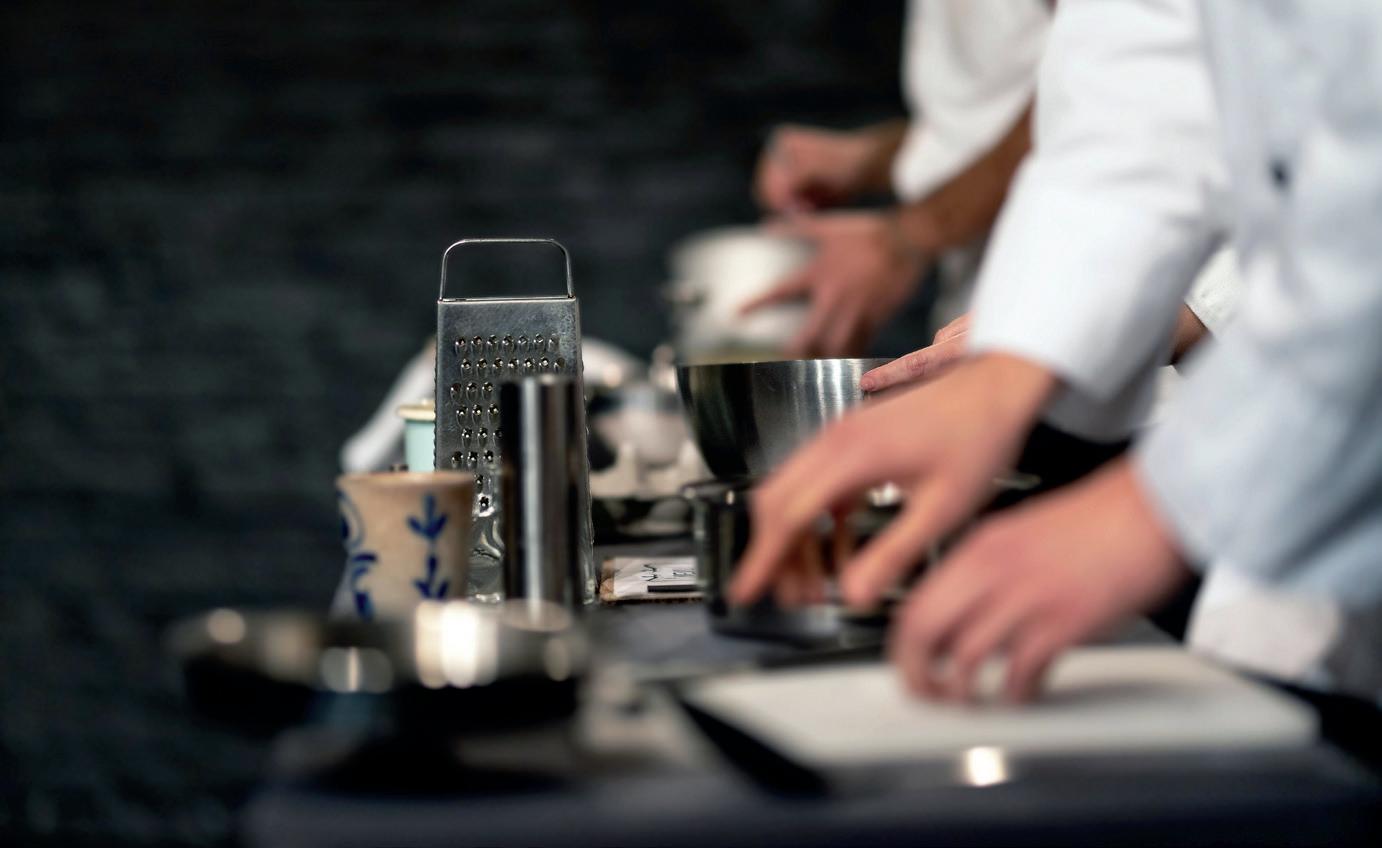
Create costing and purchasing “flags” for price fluctuations from vendors. These software platforms use interfaces or open API processes to transfer both pricing and purchases. Through these processes, operators can set dollar limits on prices. Any fluctuations are “flagged,” or identified and reported. This allows you to make adjustments to your recipes and purchasing needs in real time.
Reduce the time, labor and frequency needed to produce, serve and purchase. When set-up and managed correctly, recipe management programs help operators dramatically reduce the
John Reed, CEC®, CCA®, AAC®, is the founder of Customized Culinary Solutions , a Chicago-based culinary consulting firm providing such serves as menu and recipe development, concept development, technology integration and others for restaurant, catering and foodservice company clients. An active ACF member for the past 30 years, John has competed in multiple culinary competitions and served on the ACF Regional Culinary Team competing in the International Culinary Olympics in 2012. He is also a Certified Cicerone®.
Jackfruit has been around for millennia—especially as a staple of Southeast Asian cuisine. For American tastes, however, the nuanced tropical fruit has a few prickles—such as its large size and hard, bumpy rind—that have kept it at arm’s length, at least until now.
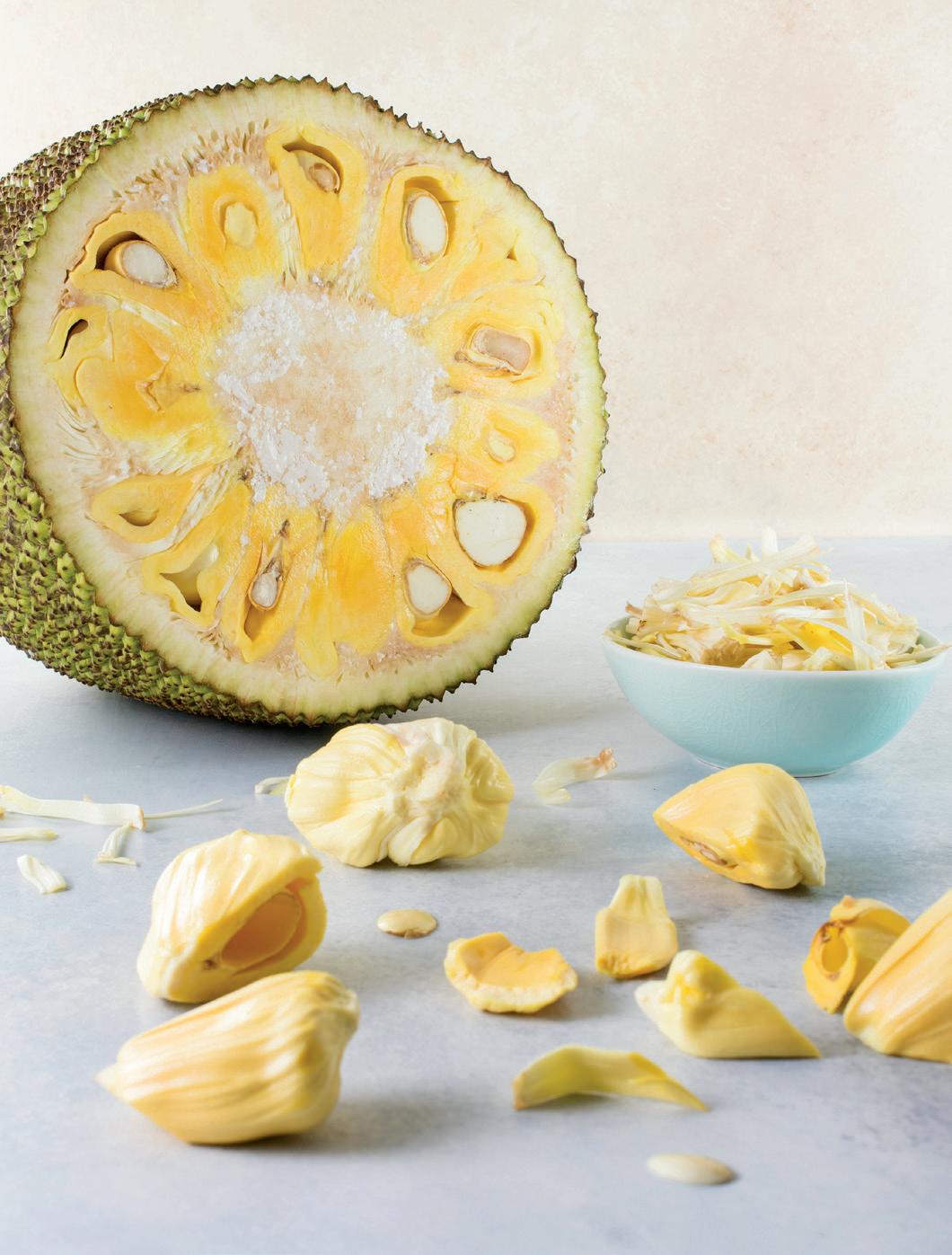
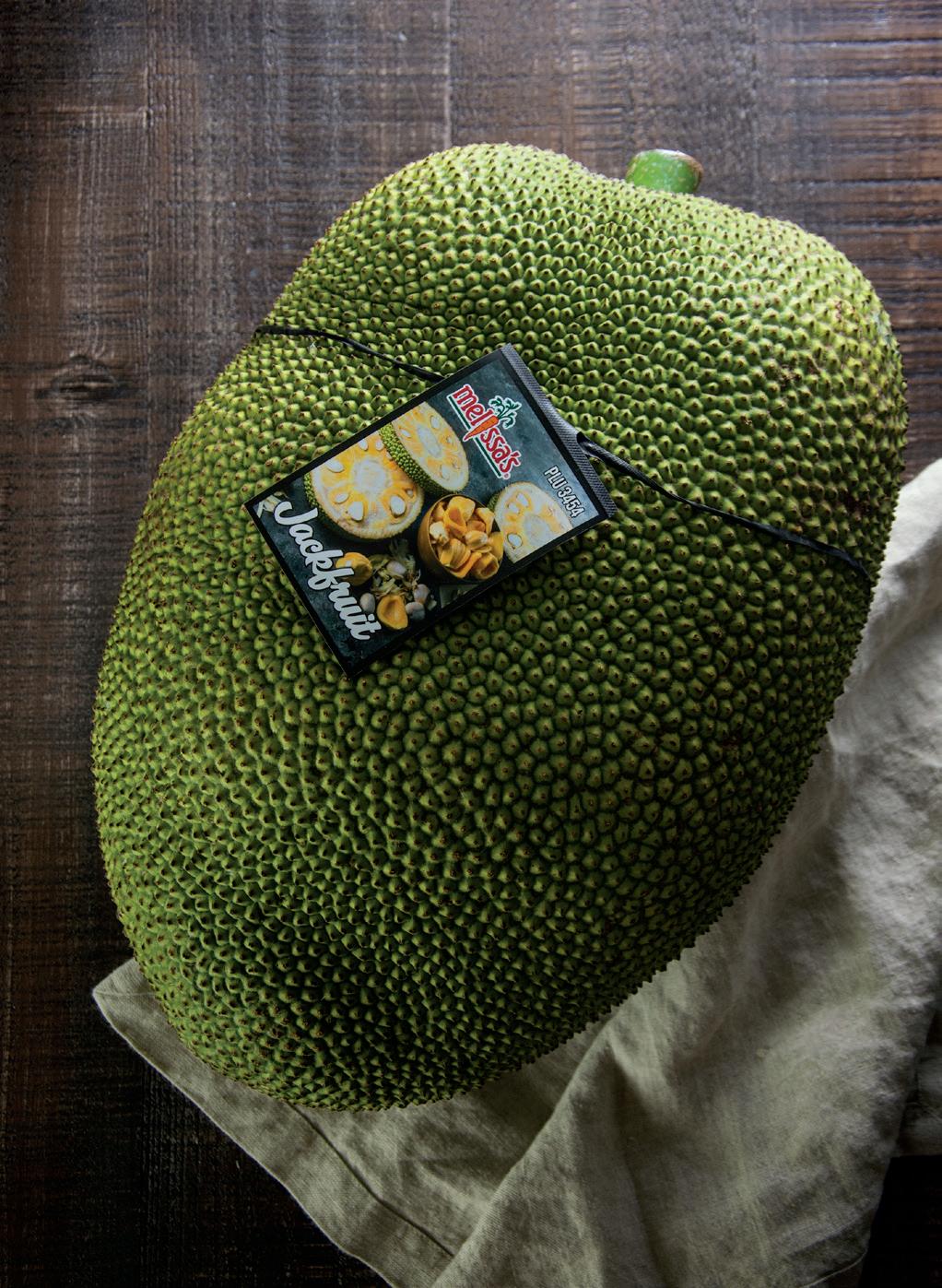
As vegan and plant-based eating continues to grow, jackfruit is making a name for itself as a meat substitute; especially younger, unripe jackfruit that hasn’t yet developed its sugars, says Chef Rommel Mendoza, vice president of culinary and innovation for Thompson Hospitality Corp., the minority/ diversity partner of Compass Group USA mostly serving the corporate, healthcare, K-12 and higher education sectors. A Filipino chef, Chef Mendoza is no stranger to the fruit, which is a staple of that cuisine.
As an added bonus, jackfruit is a sustainable ingredient; a single tree can grow up to 200 fruits annually, and it’s hearty and resilient, so it can readily survive pests, changing climates and draught.
“Unripe, it has less flavor and it’s almost bland like a potato or tofu,” says Mendoza. As such, jackfruit can easily take on other flavors from seasonings and sauces. When shredded and seasoned with barbecue sauce, for example, the fruit tastes
like pulled pork or chicken and can be used as a meat substitute for tacos and sandwiches in that way. Ripened jackfruit, on the other hand, has a much sweeter, tropical taste with Mendoza’s take on the flavor as a complex cross between apricot, pineapple, banana, cantaloupe and mango.

Jackfruit in whole form can be hard to handle in the kitchen. Mendoza says that the main issue with jackfruit is dealing with the off-putting, white sticky substance it secretes when cut. “You have to oil your hands and knives before you cut into it, or it won’t come off,” he says.
The fruit’s sheer size can also pose challenges. With a hard, bumpy rind, it’s the largest tree fruit grown, weighing an average of 20 to 30 pounds, says Chef Tom Fraker, executive chef and test kitchen director for Los Angeles-based produce supplier Melissa’s/World Variety Produce, Inc.

While it’s often possible to source the whole fruit at Asian markets and from Asian distributors, the good news for chefs is that jackfruit is widely canned for easier use. Melissa’s offers a pre-cut, packaged version.
Chef Mike Morales, executive chef/ partner of Sunda New Asian in Chicago and Nashville, Tennessee, uses canned jackfruit (in a light syrup) for the operation’s signature Sunda Sundae, which is a take on the popular Filipino halo-halo shaved ice dessert—a nod to his heritage. To make the dessert, he adds condensed milk and a little evaporated milk to the shaved ice, which he then pairs with a housemade mango flan, sliced jackfruit, sweetened red mung beans and coconut gel. He tops everything with ube (purple yam) ice cream and toasted coconuts.
El Charro Café is part of Tuscon, Arizona-based Flores Concepts management group with a total of 12 restaurants. The group’s vice president Ray Flores notes that its newest Charrovida concept features jackfruit carnitas as fillings for enchiladas and burritos, and as an egg substitute for a vegan omelet. “It can be used as any shredded meat product could be used, even in barbecue recipes,” he says. “We use the meat of the fruit and also cook the seeds in with the jackfruit, which turns it into a large, pinto bean-like item. We treat our jackfruit like real beef, braising it and slow-cooking it for best results.”
The three El Charro Café Mexican eateries feature a separate, plant-based menu that includes jackfruit birria
taquitos. Birria is a Mexican spicy stew usually made with beef or goat. El Charro’s version features jackfruit, which is marinated for about two hours in pickling spices with bay leaf and peppercorn, and then browned and braised like beef. The mixture is then rolled in corn tortillas and fried until crisp.
For optimum, meat-mimicking flavor, Flores suggests adding a little nutritional yeast to give the fruit a buttery, umami-rich flavor.

Jackfruit is versatile, not only for its many ripe, sweet applications and unripe, savory uses, but also because it has three distinct, edible parts. “Just under the surface is a stringy layer that most people discard,” says Chef Mendoza. “But it’s edible. In Southeast Asia, they sauté the strings with vegetables, seasonings and coconut milk.”
Fraker notes that use of the leathery fiber is common when going for the pulled-pork effect. However, it must be cooked like chuck meat for up to an hour before it breaks down to become more tender.
Aside from the fiber are numerous pods, each with a seed, which are also edible and have a chestnut-like flavor. “In different parts of the world they mash and dry the seeds and use it as a flour substitute,” Chef Mendoza says.
Chef Fraker suggests tossing the seeds in olive oil, salt and pepper, and then roasting them at 350°F for up to 45 minutes. “You can eat them like that or chop and crush them and use them as garnish for salad because of their nutty flavor and crunchy texture,” he says.
The pods can also be used for pulled pork-like applications simply by cutting them into thin strips, he says. One of his favorite applications for ripe pods is a crab and jackfruit crostini, with the fruit adding a bit of sweetness. He also adds the pods to crab cakes with a touch of serrano for some heat.
Jackfruit works well as a scallop and calamari replacement because of its similar texture, Chef Fraker says. “When it’s ripe, it has a deep orange color that pops,” he adds, noting that he often uses it in a salsa with red, yellow and green bell peppers, plus more serrano.
Third-party research firm Datassential has reported that while 43 percent of consumers know what jackfruit is, only 16 percent have tried it, so there is plenty of room for growth. Given the expanding availability of jackfruit and its culinary versatility, the data seems right on point: jackfruit most likely will have a brighter future in the United States, especially as the plantbased eating movement continues.



This is the time to prepare yourself for the future. American Culinary Federation is currently offering both members and non-members FREE access to select courses and conference recordings through the ACF Online Learning Center. Don’t delay—take advantage of this exciting offer now!
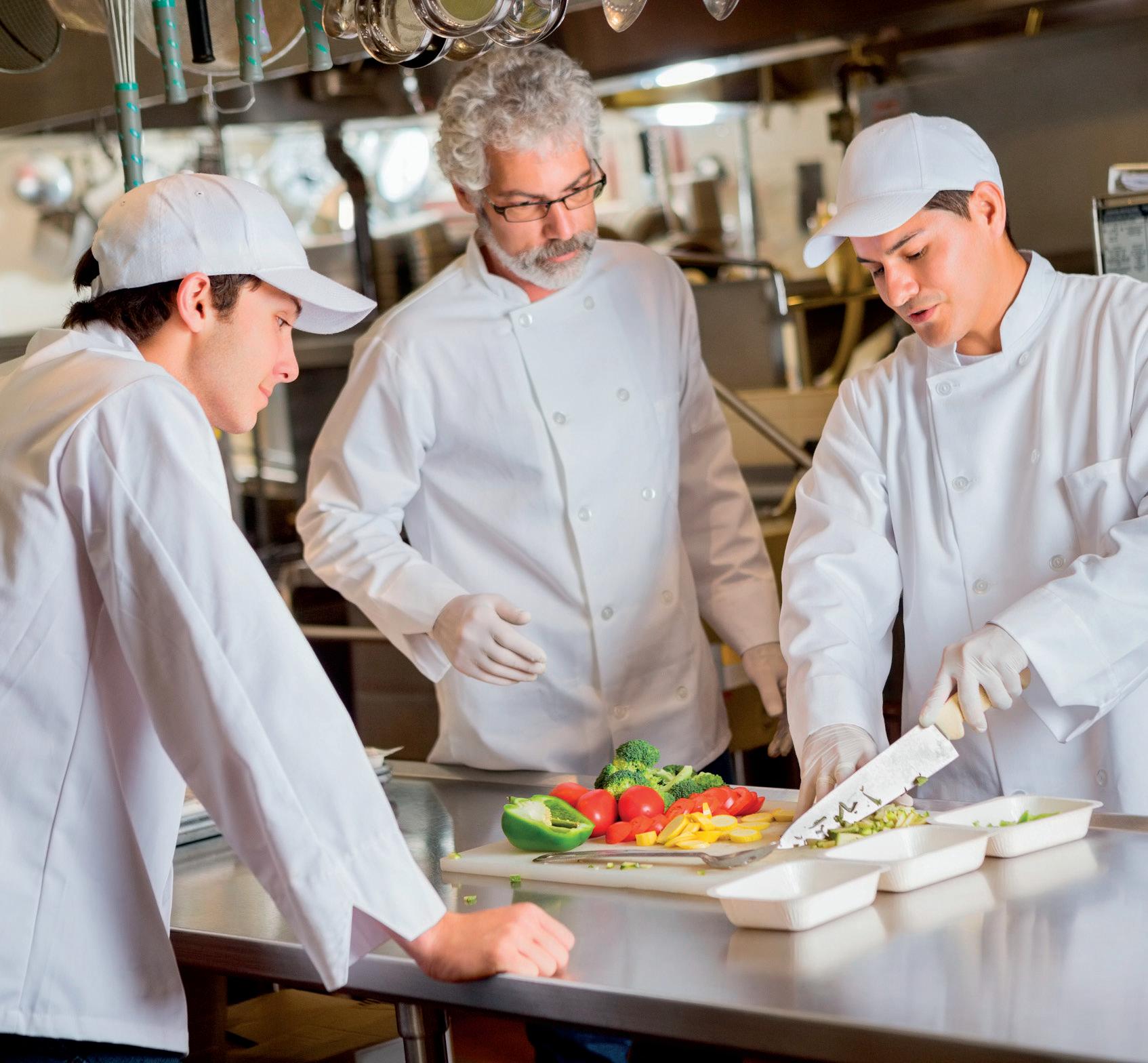
Register today at ACFChefs.org/OLC
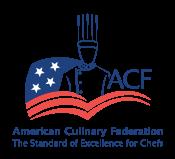


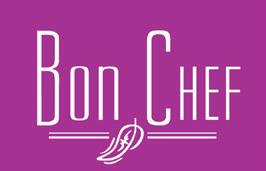
 Executive Chef
Executive Chef
Now is not the time to relax food safety and sanitation standards. With a bounty of resources and professional support, you won’t need to.
Those chef’s whites in your closet? You earned them through hard work and discipline. And chances are, you’re just as disciplined about food safety and cleanliness. Every chef wants their staff and guests to stay safe and healthy.
Following robust food safety, hygiene and sanitation practices has always been imperative in foodservice settings. In the face of a public pandemic like COVID-19, now is no time for shortcuts.
These are daunting days for restaurants, caterers and other foodservice establishments. The preventive measures you take today (or when your establishment re-opens) to ensure sanitary conditions will not only help prevent infections and foodborne illnesses, they will set you up for longterm success in the future.
There is currently no evidence that the coronavirus is transmitted through food, food packaging or food containers. But as the FDA cautions, it is possible that this virus – like others – can survive on surfaces or objects. This makes proper cleaning and sanitation of food prep areas, kitchen surfaces and wares more essential than ever.
With today’s public health and safety concerns, food safety regulators and sanitation inspectors are becoming increasingly vigilant. The public is more concerned about food safety, too.
Even under ordinary circumstance, as the CDC reports, 78 percent of foodborne illnesses originate in foodservice kitchens, and one in six people will experience such illnesses this year. Unfortunately, people are more likely to
share their negative dining experiences— including ones that lead to foodborne illnesses—than positive reviews.
If that weren’t enough, you may also be navigating an entirely new set of operating challenges by offering takeout options and curbside service. Keep in mind that alternative or carry-out meal prep operations will still require that prepwares be thoroughly washed and sanitized. This may be the time to reevaluate staff dishwashing and kitchen procedures.
The good news? Coronavirus is a small-enveloped virus, which are least
Sanitize, sanitize, sanitize.
What about sanitation and disinfection? These terms are often used interchangeably, but there’s a critical difference in application and effectiveness.
Sanitizers significantly reduce the numbers of infectious microbes and are a staple of foodservice kitchens. Designed for use on surfaces where food is prepared, served or stored, when used correctly, they are effective at reducing bacterial contaminants, including the most common foodborne pathogens, such as common strains of staph, E. coli, listeria and salmonella.
resistant to disinfection. That means disinfectants can be used to effectively kill coronavirus on surfaces. Here’s a quick refresher on the difference between cleaning, sanitizing and disinfecting.
As a culinary pro, you know what it means to clean. But, you might not realize how important this seemingly simple process is to ensuring effective sanitation and disinfection. Cleaning uses water, detergent and scrubbing to physically remove dirt and organic matter – which can interfere with sanitizing or disinfecting.
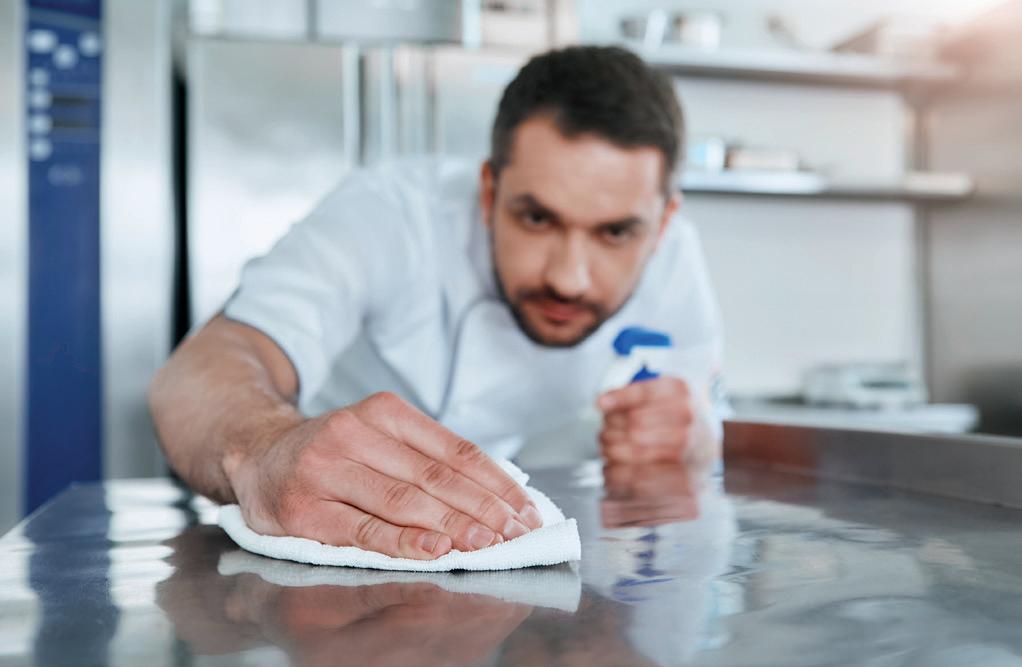
Cleaning is essential preparation to sanitizing or disinfecting. According to the CDC, “Cleaning of visibly dirty surfaces followed by disinfection is a best practice measure for prevention of
Though less powerful than disinfectants, sanitizers do not require rinsing, as disinfectants do, because of their chemical formulations. The EPA requires sanitizers to kill 99.999% of illness-causing bacteria within 60 seconds on food contact surfaces.
Disinfect to close the loop.
Disinfectants irreversibly inactivate microbes. Disinfectants use more concentrated formulas and/or require longer dwell times to destroy most or all pathogens, including bacteria, virus and fungi microbes. In hospitality and food service settings, areas that require routine disinfection are typically hightouch surfaces and objects. Routine disinfecting of food contact sites, such as tabletops, cutting boards and countertops, is not typically necessary.
By taking a little refresher course in cleaning and sanitation, we’re poised for an even cleaner comeback. To learn more, visit ecolab.com
Which of the following is not part of the traditional preparation for fried green tomatoes?
a. Soaking tomatoes overnight in vinegar
b. Egg wash slices of tomato
c. Dredge in seasoned breadcrumbs or cornmeal
d. Fry slices in oil
What does Rachel Dunkel recommend to help reduce anxiety?
a. Start a routine
b. Practice self-compassion
c. Reach out and talk to others
d. All of the above
When it comes to deliveries, Chef Jamie Bostian, CEC, focuses on maintaining social distancing with mostly contactless delivery, and on .
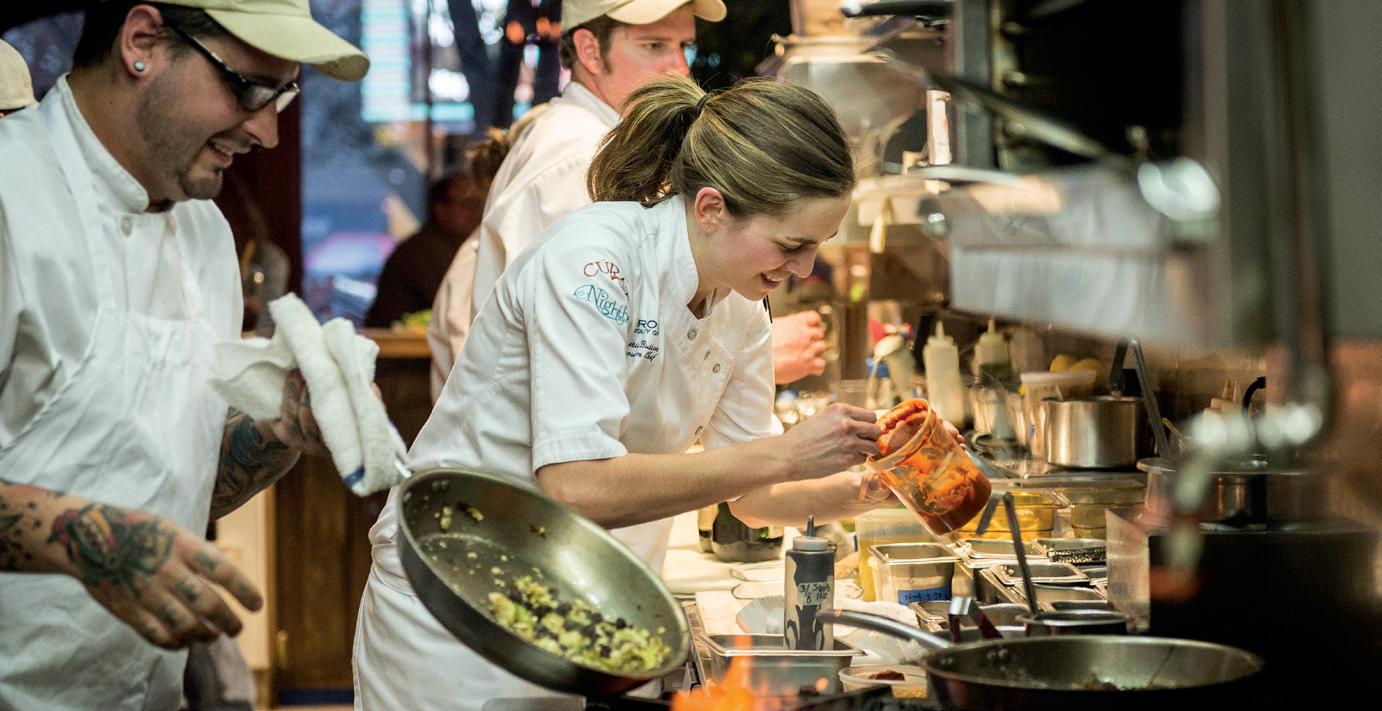
a. keeping drop off times consistent
b. making the presentations beautiful
c. adding positive messages
d. None of the above
Chef Russell Scott, CMC, has found that having is key to his success currently and in the future.

a. a positive attitude
b. an adaptable menu
c. a well-trained staff
d. lots of energy
Healthcare foodservice disaster menus are typically developed with the assumption that there is no or because of a hurricane or other natural disaster.
a. electricity/water
b. water/supplies
c. supplies/electricity
d. labor/supplies
The Chef’s Table category of the IKA requires teams to present different dishes for twelve people.
a. three
b. five
c. seven
d. twelve
Where is the Cape and Island Chefs Association chapter located?

a. New York
b. New England
c. California
d. Washington


FERDINAND

The Ferdinand Metz / American Culinary Federation Relief Fund was established to provide timely financial assistance to chefs, cooks, culinarians and foodservice workers across America who are experiencing financial hardship as a result of the coronavirus pandemic.
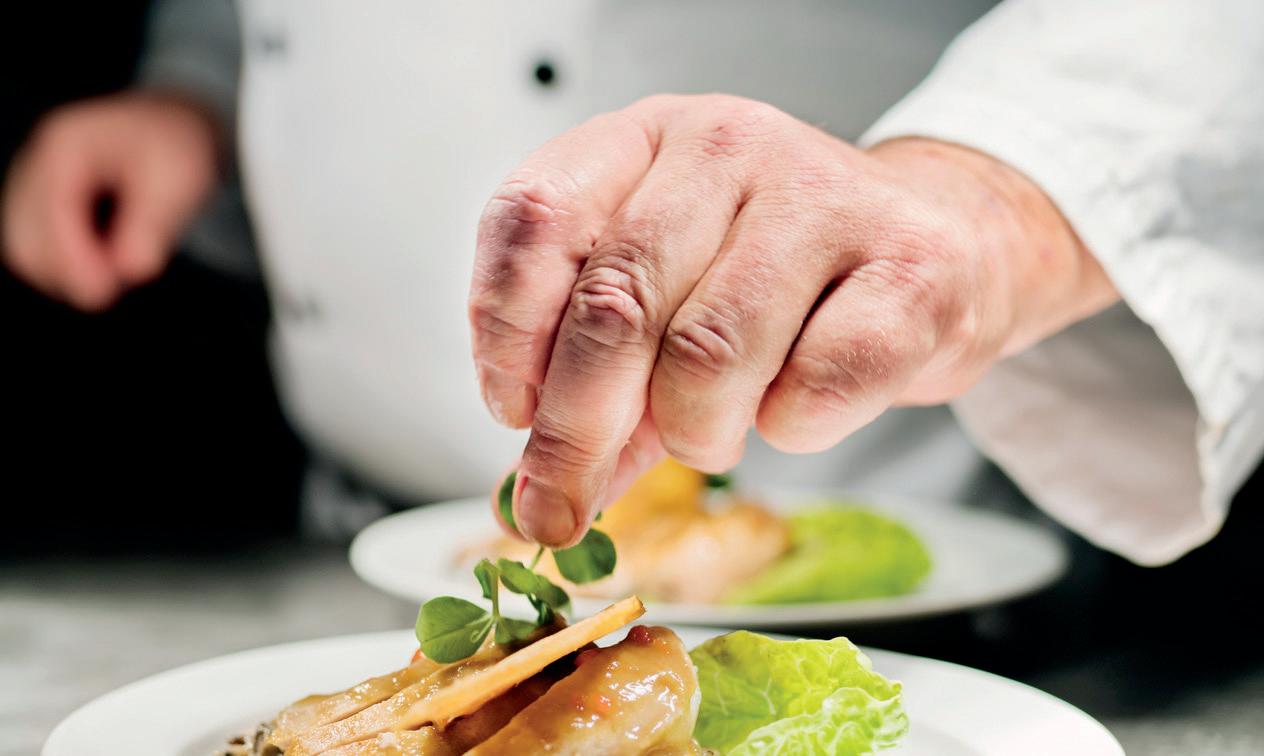
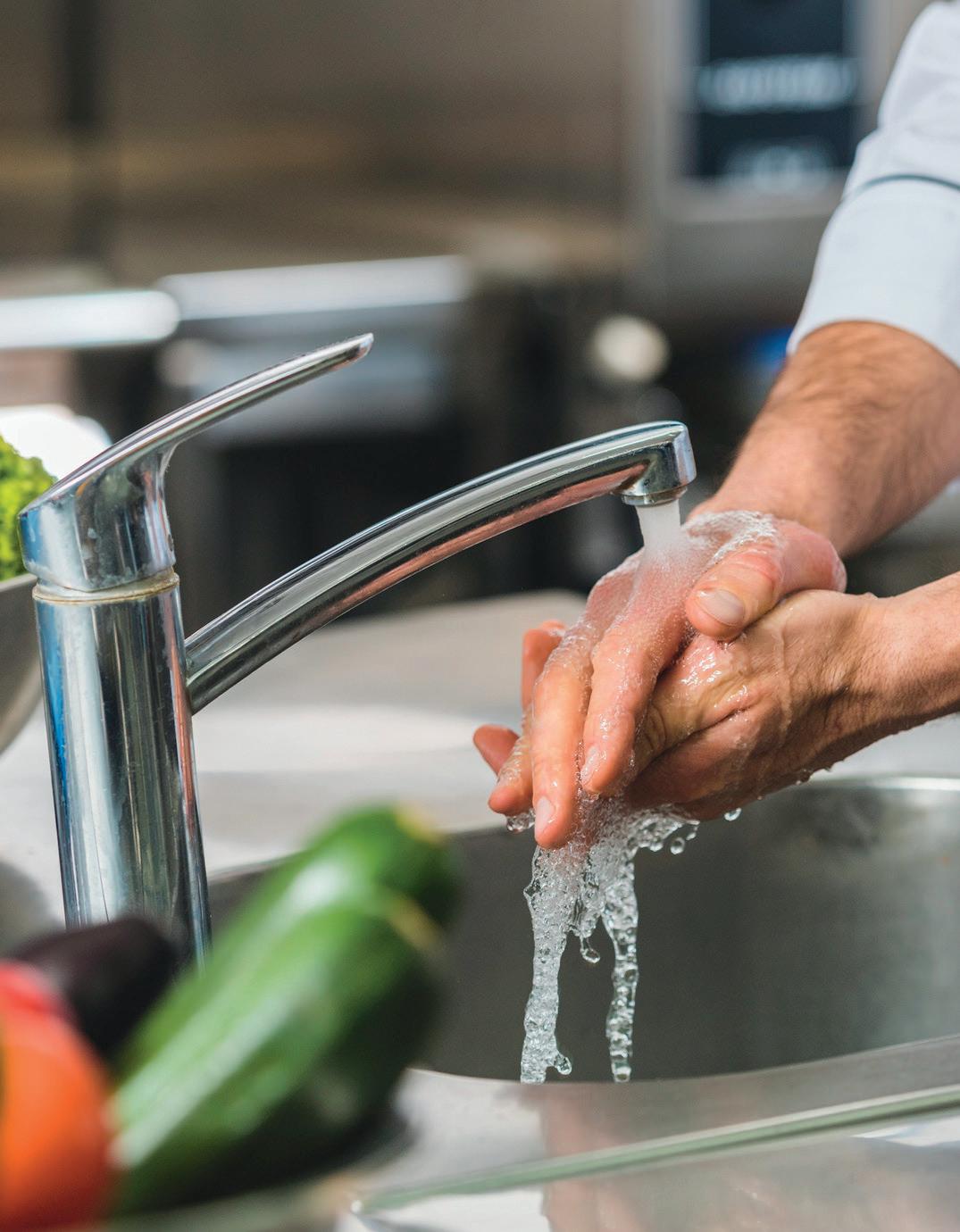
Visit ACFChefs.org for more info.
